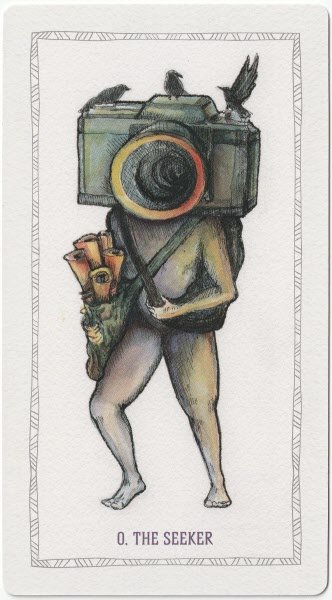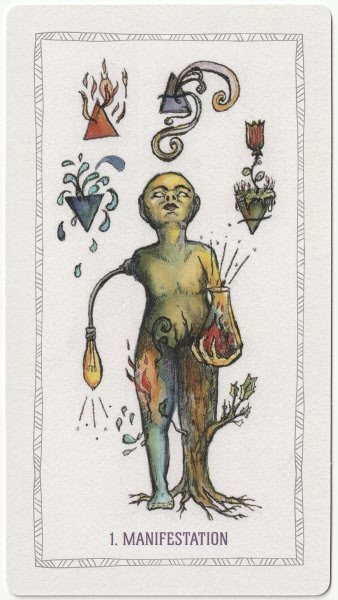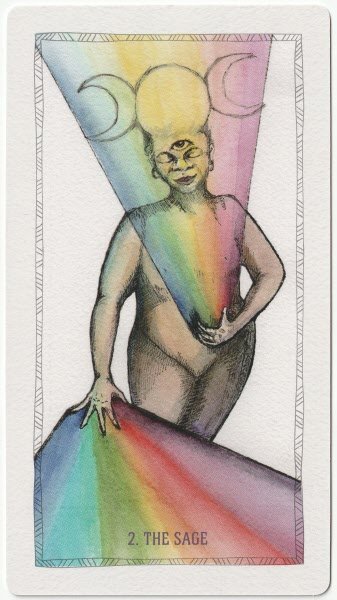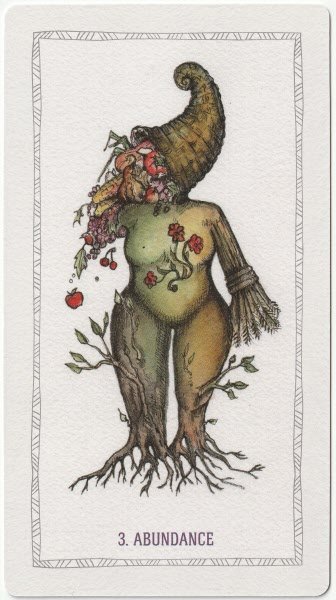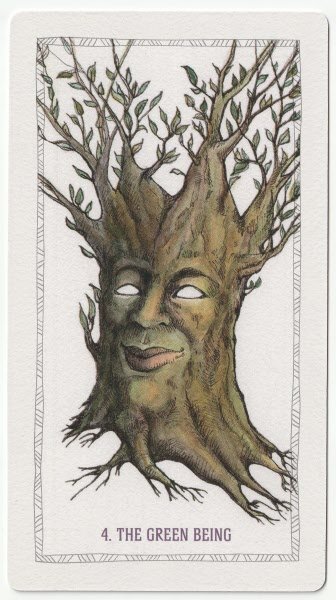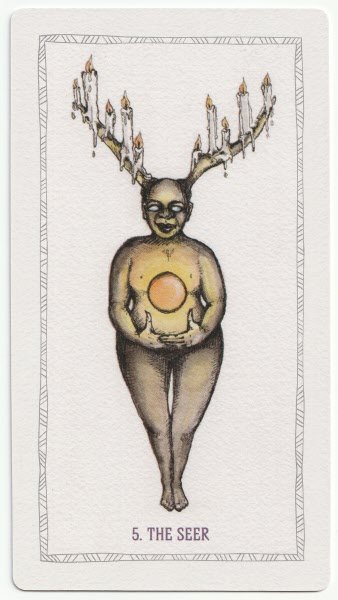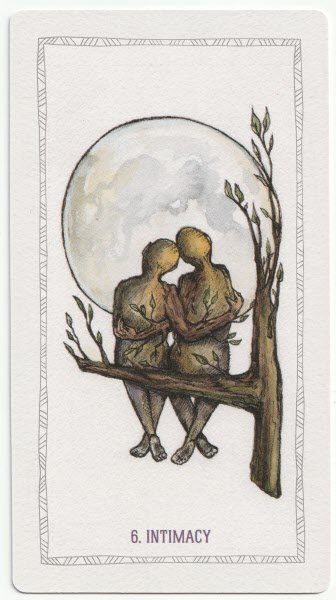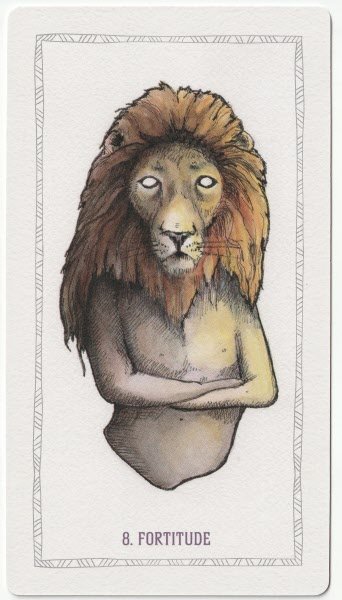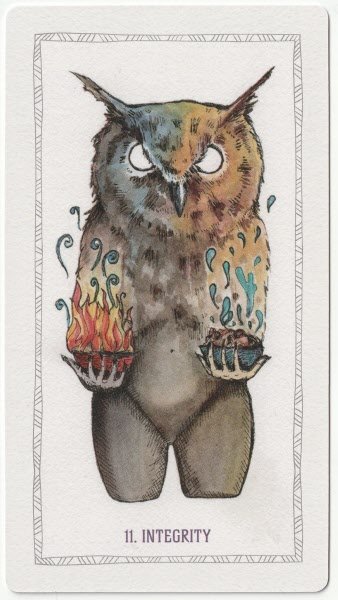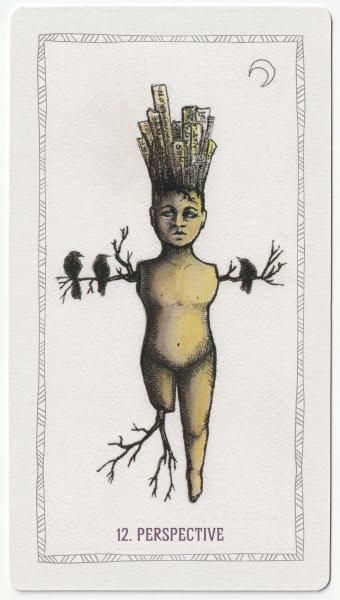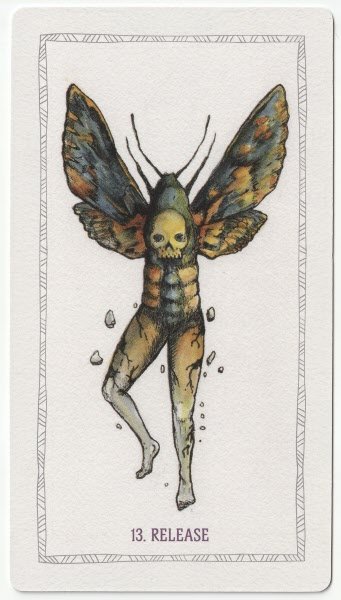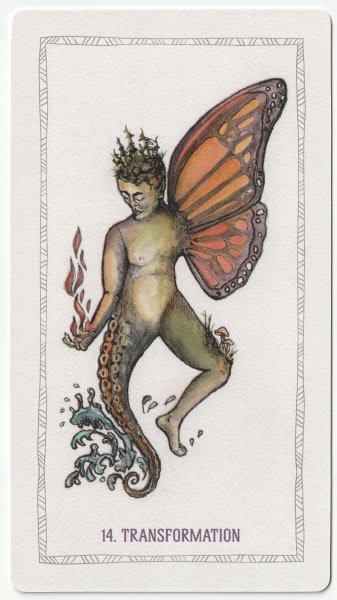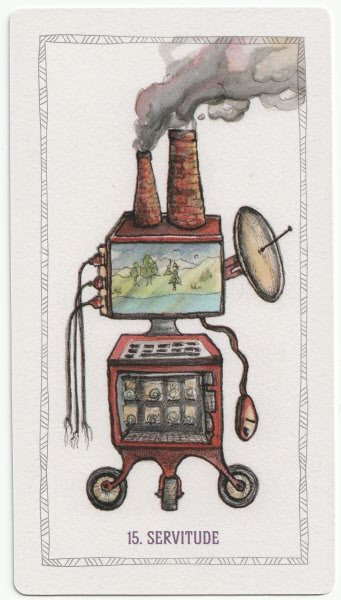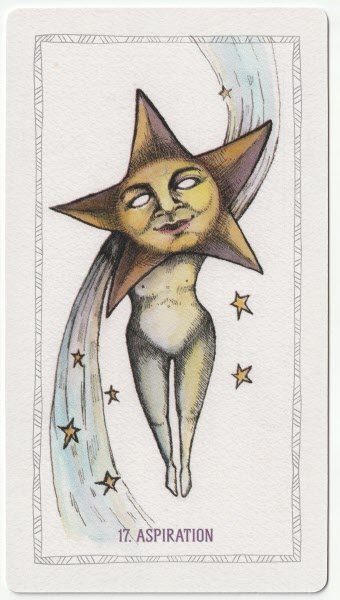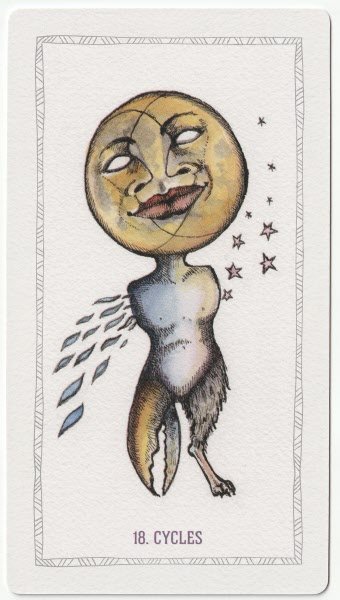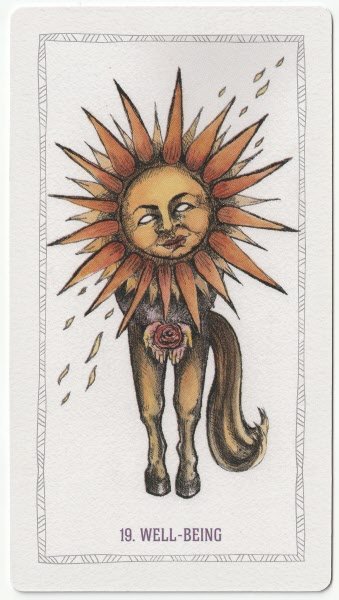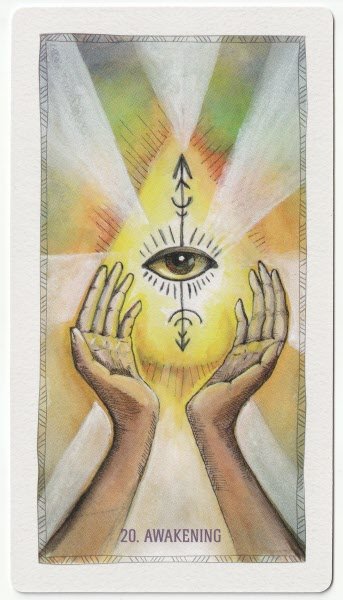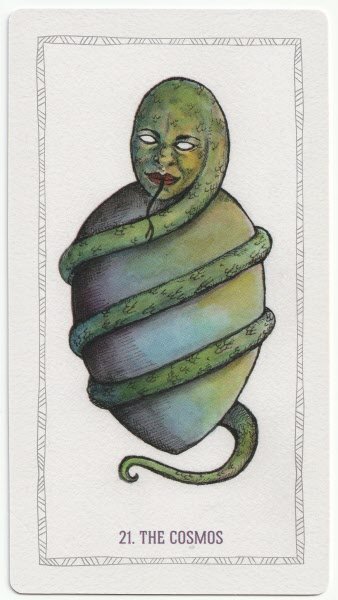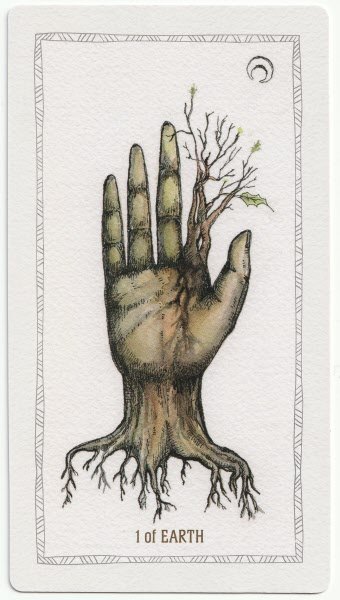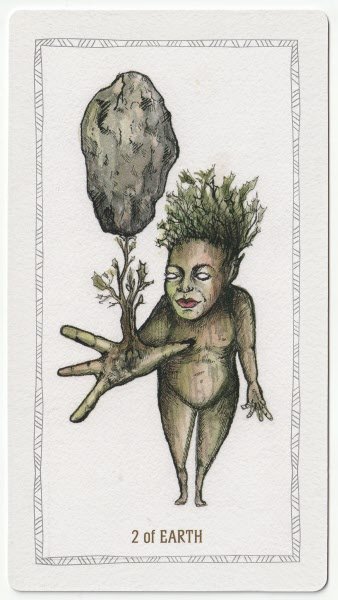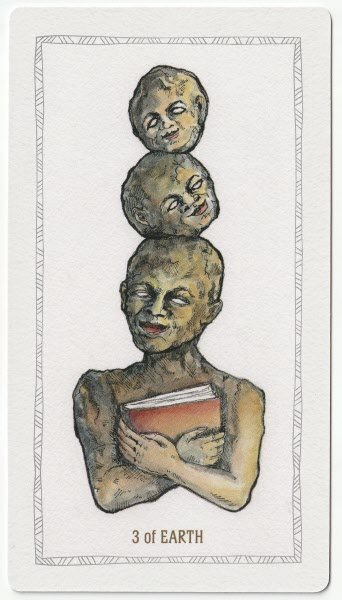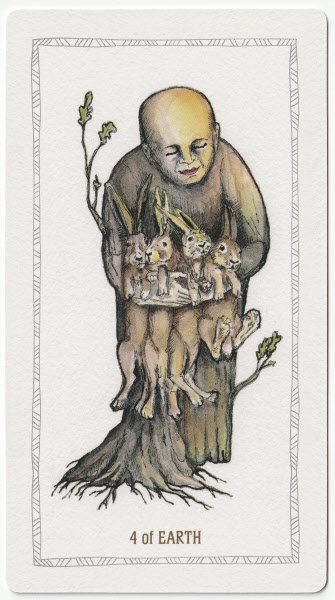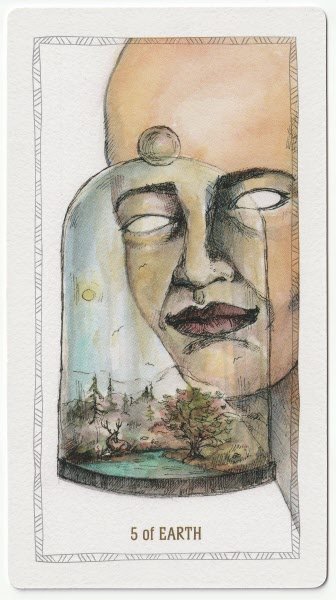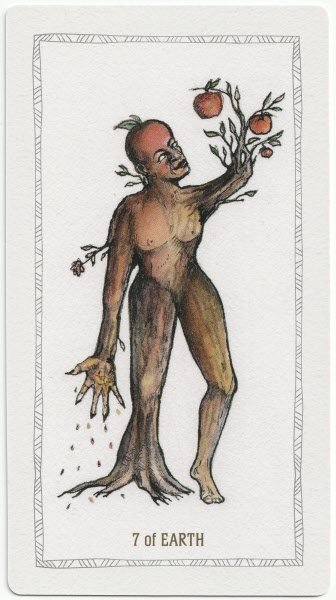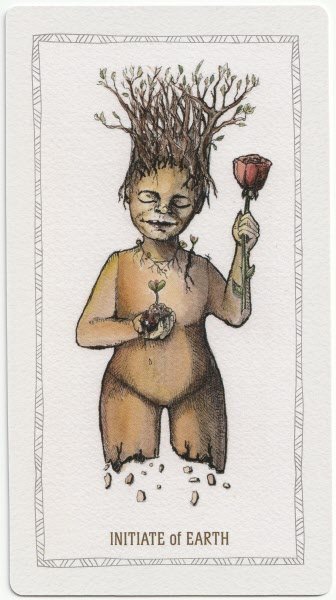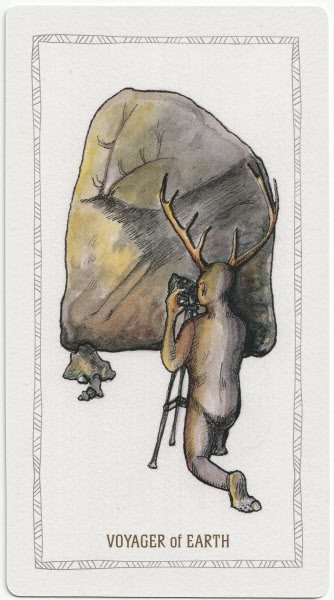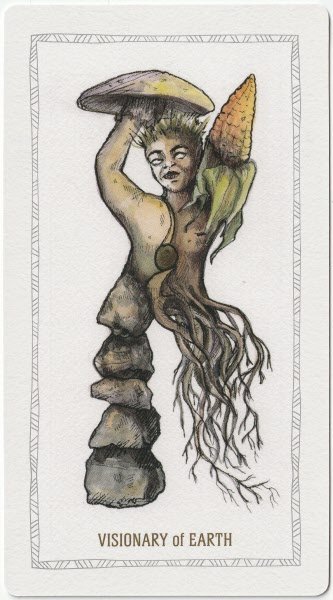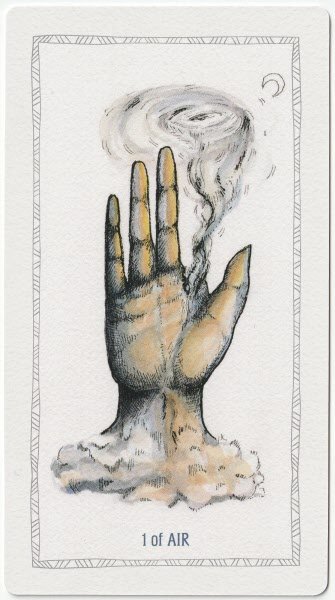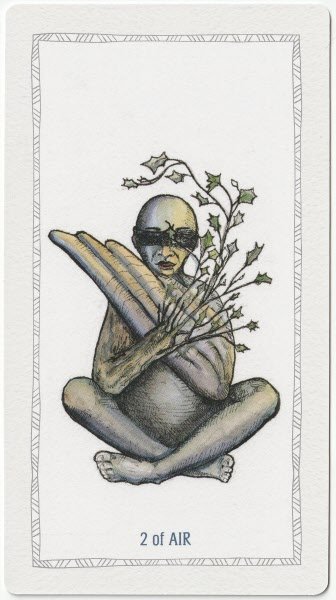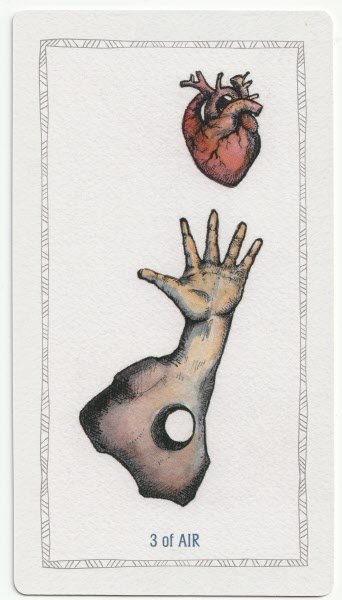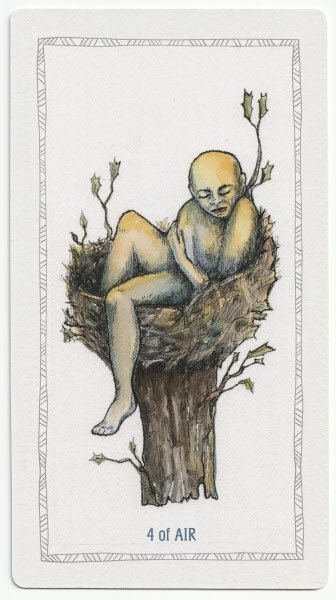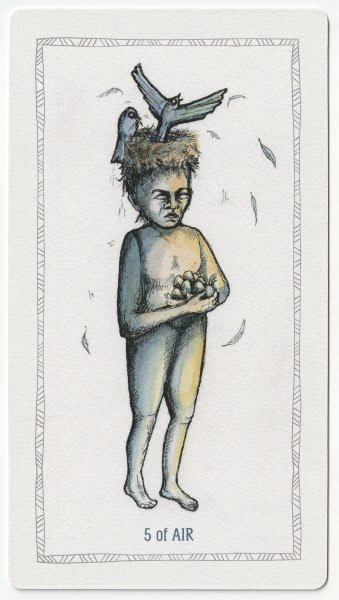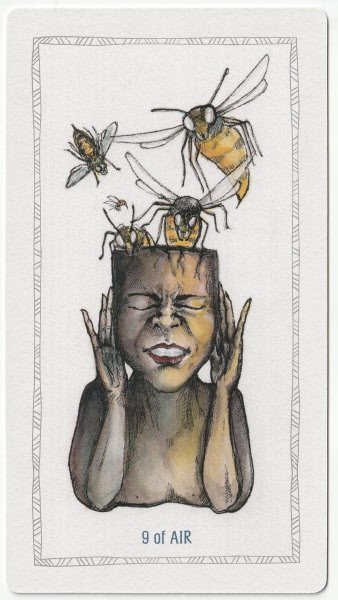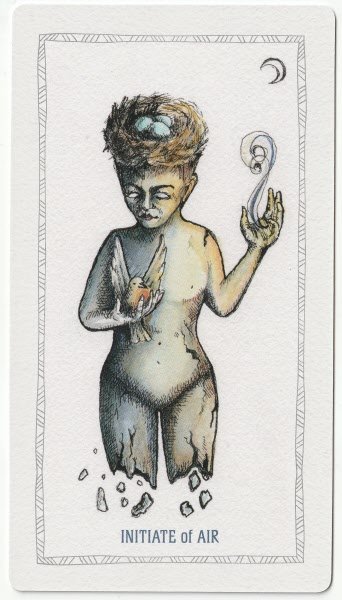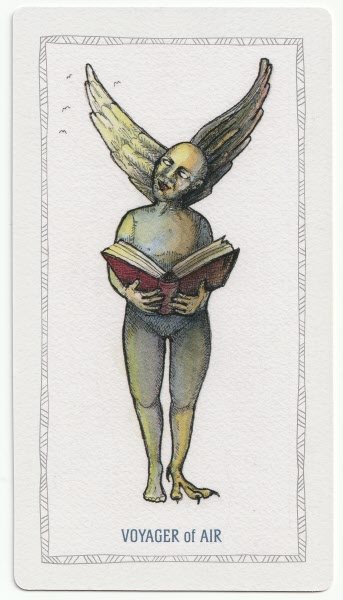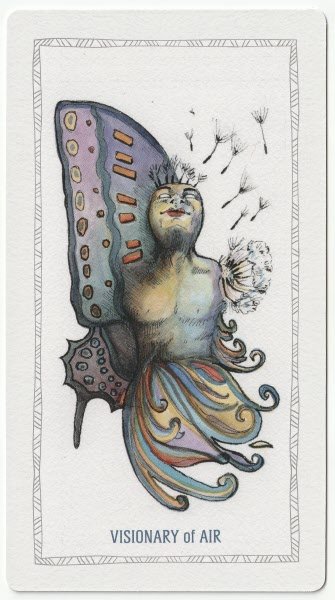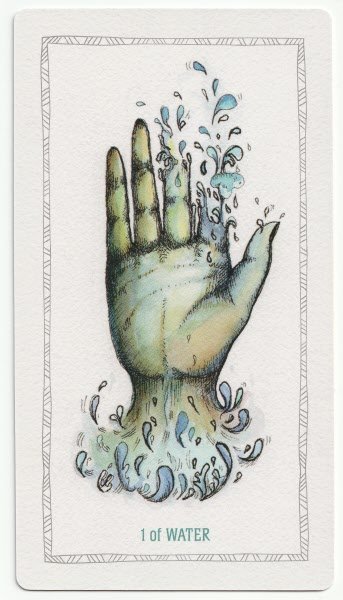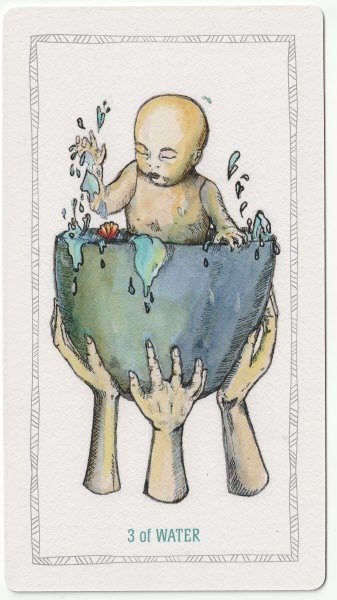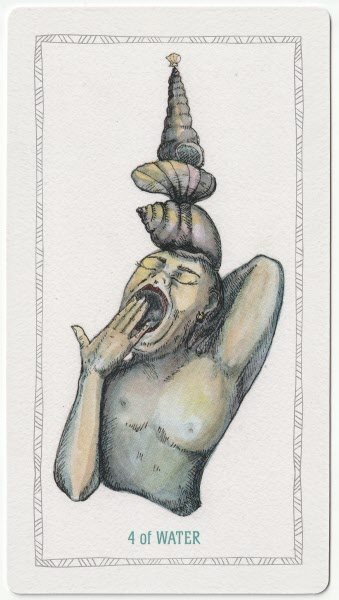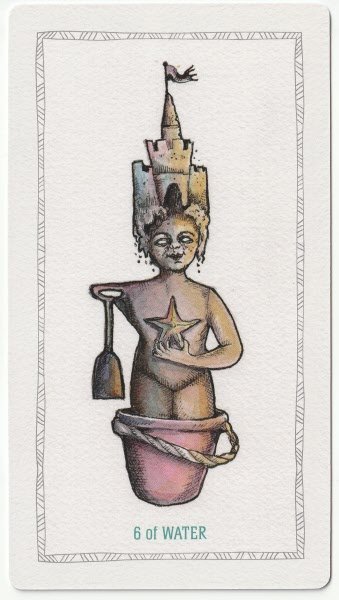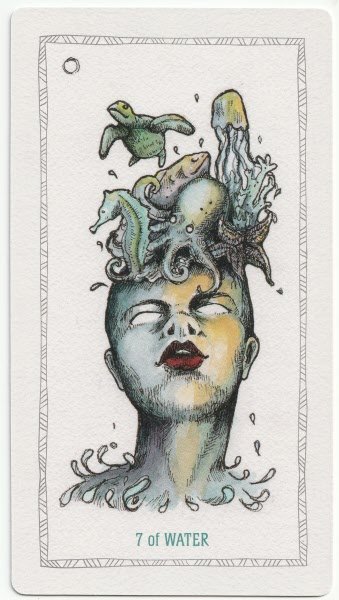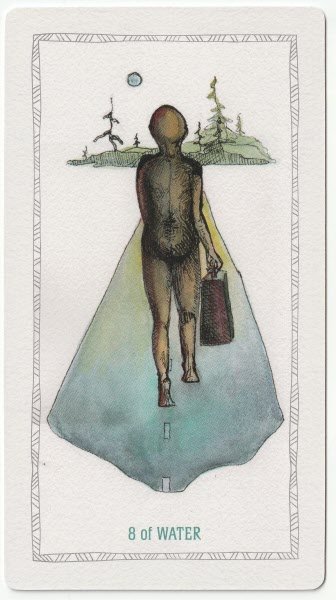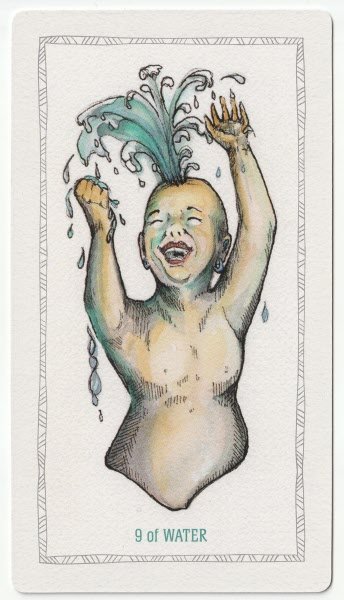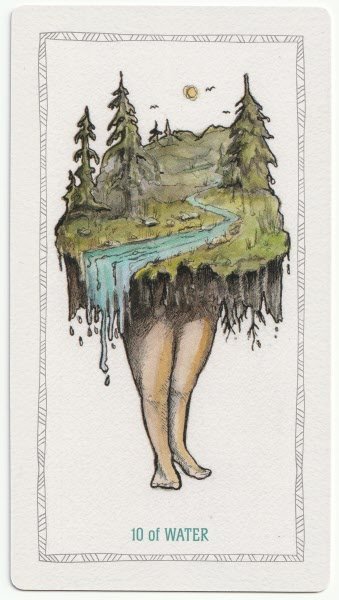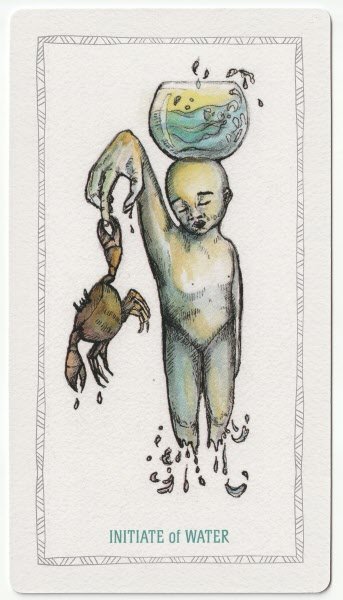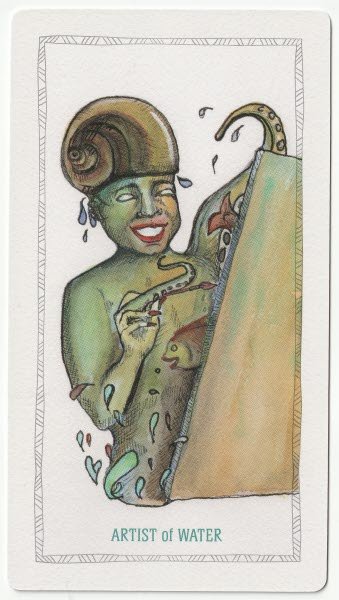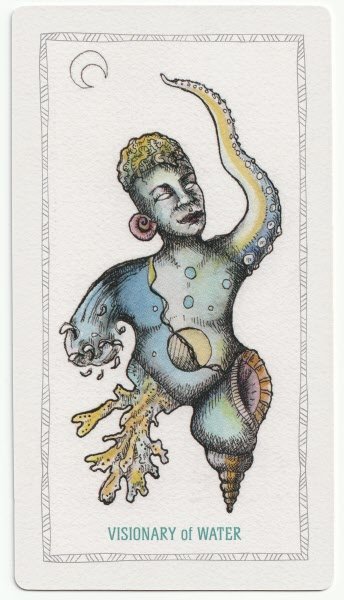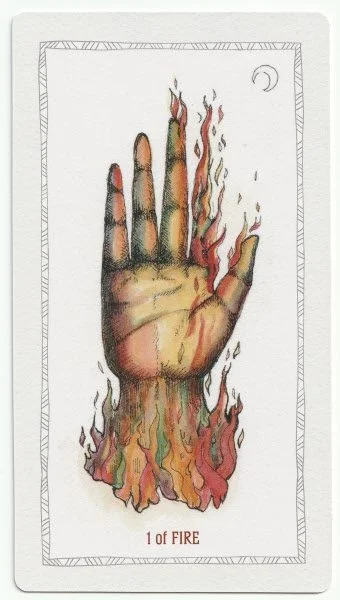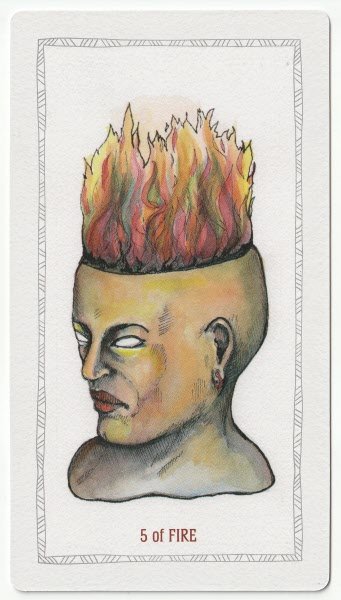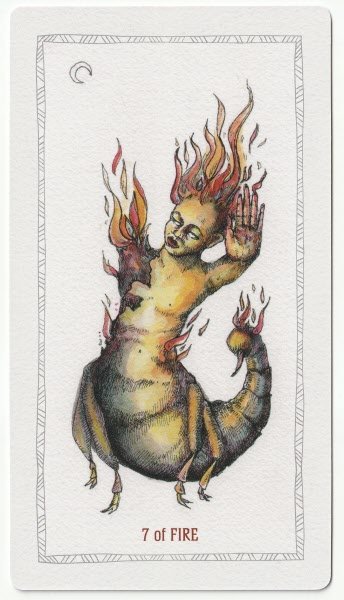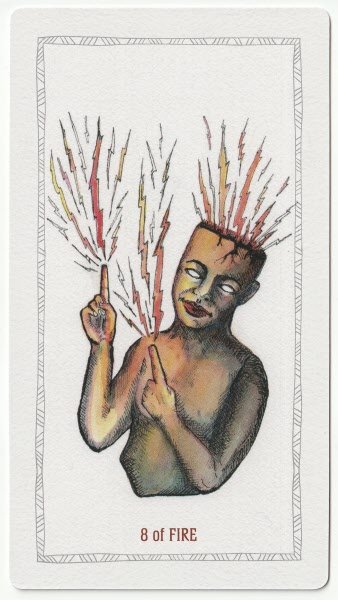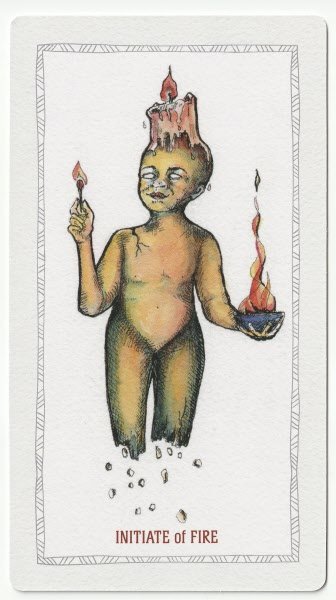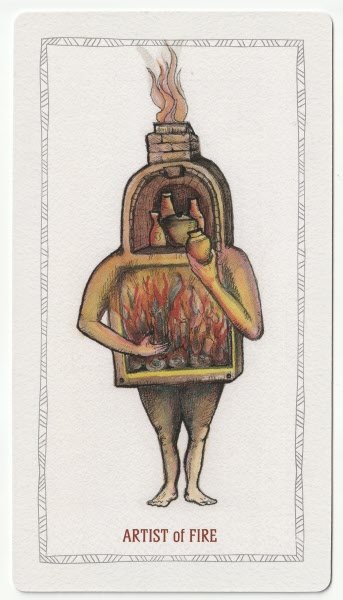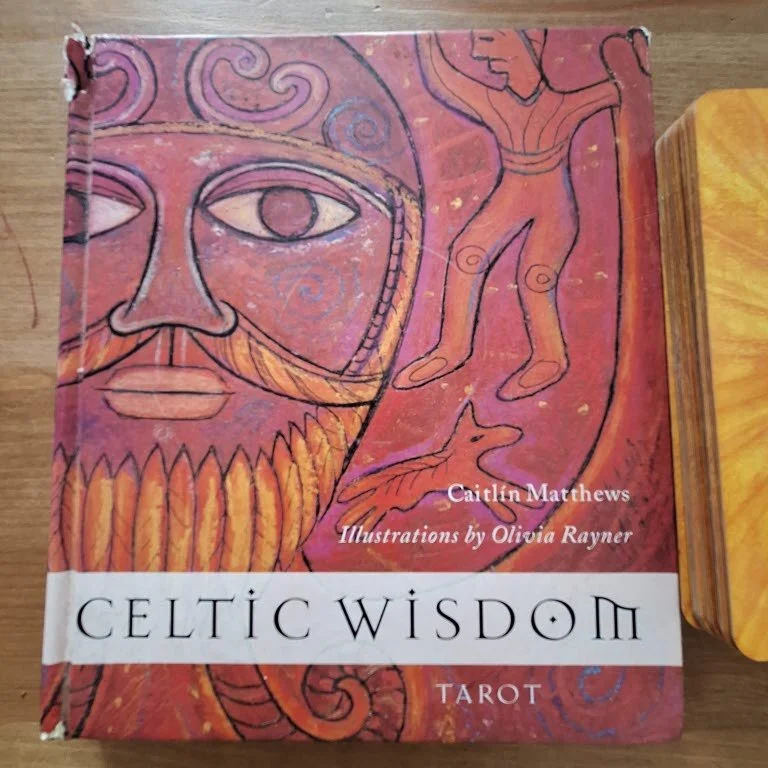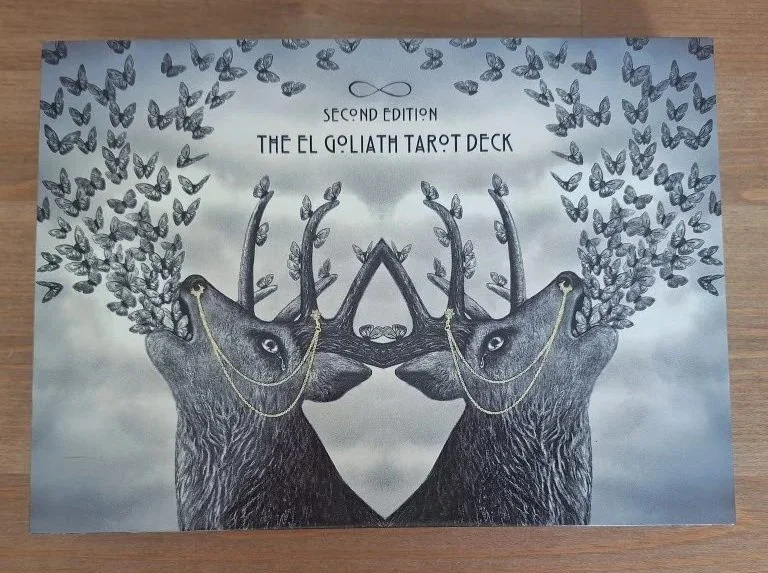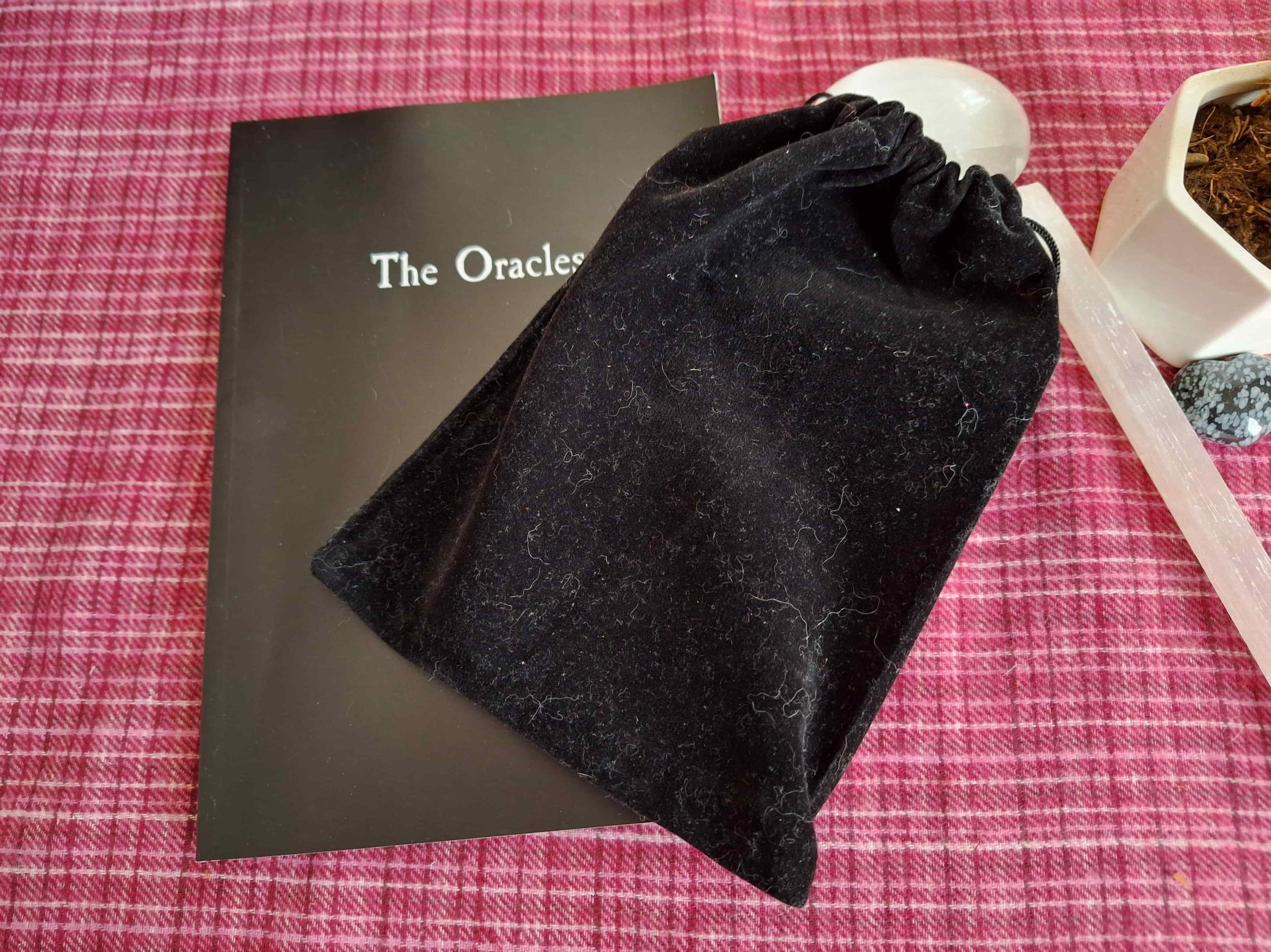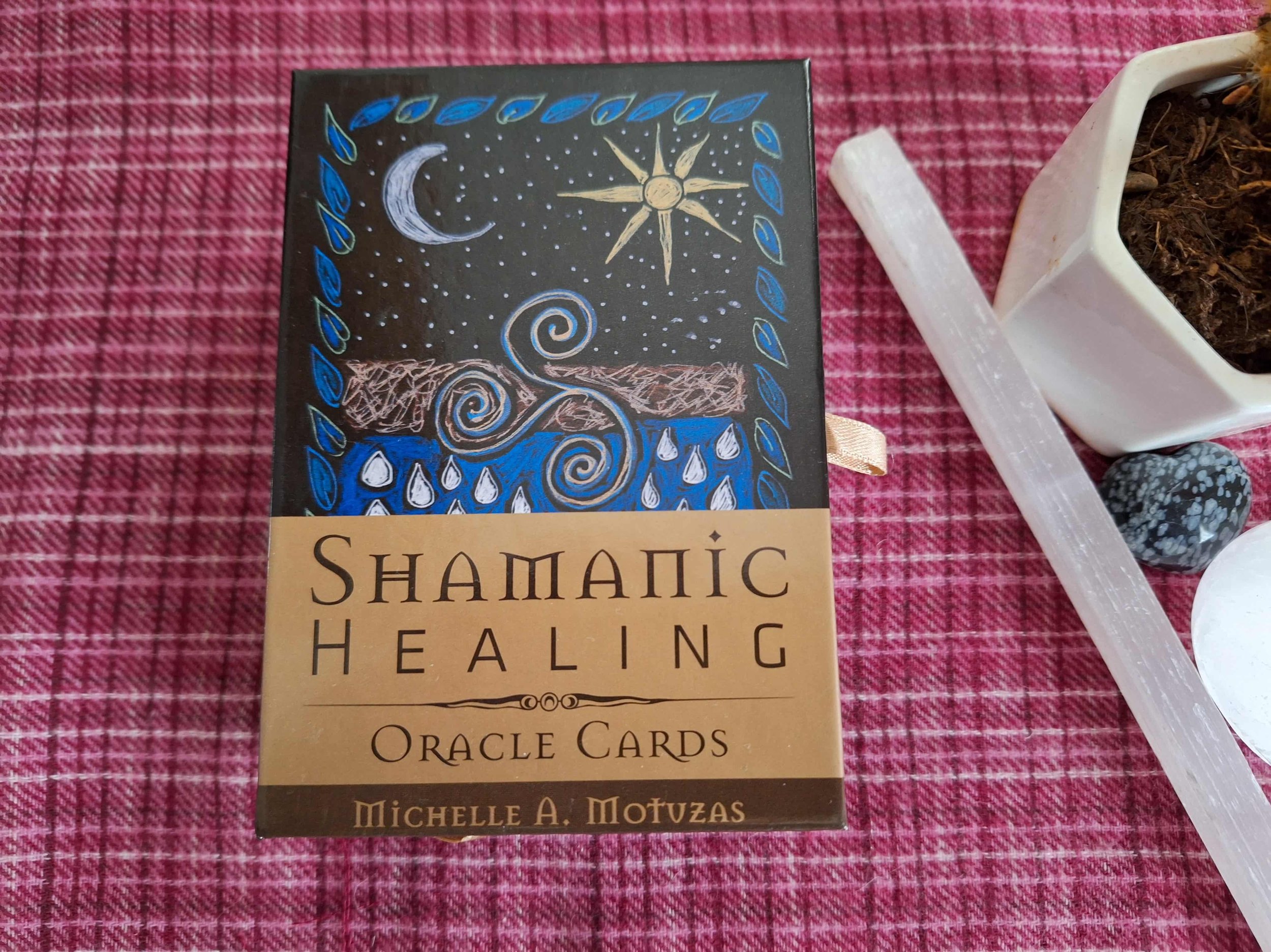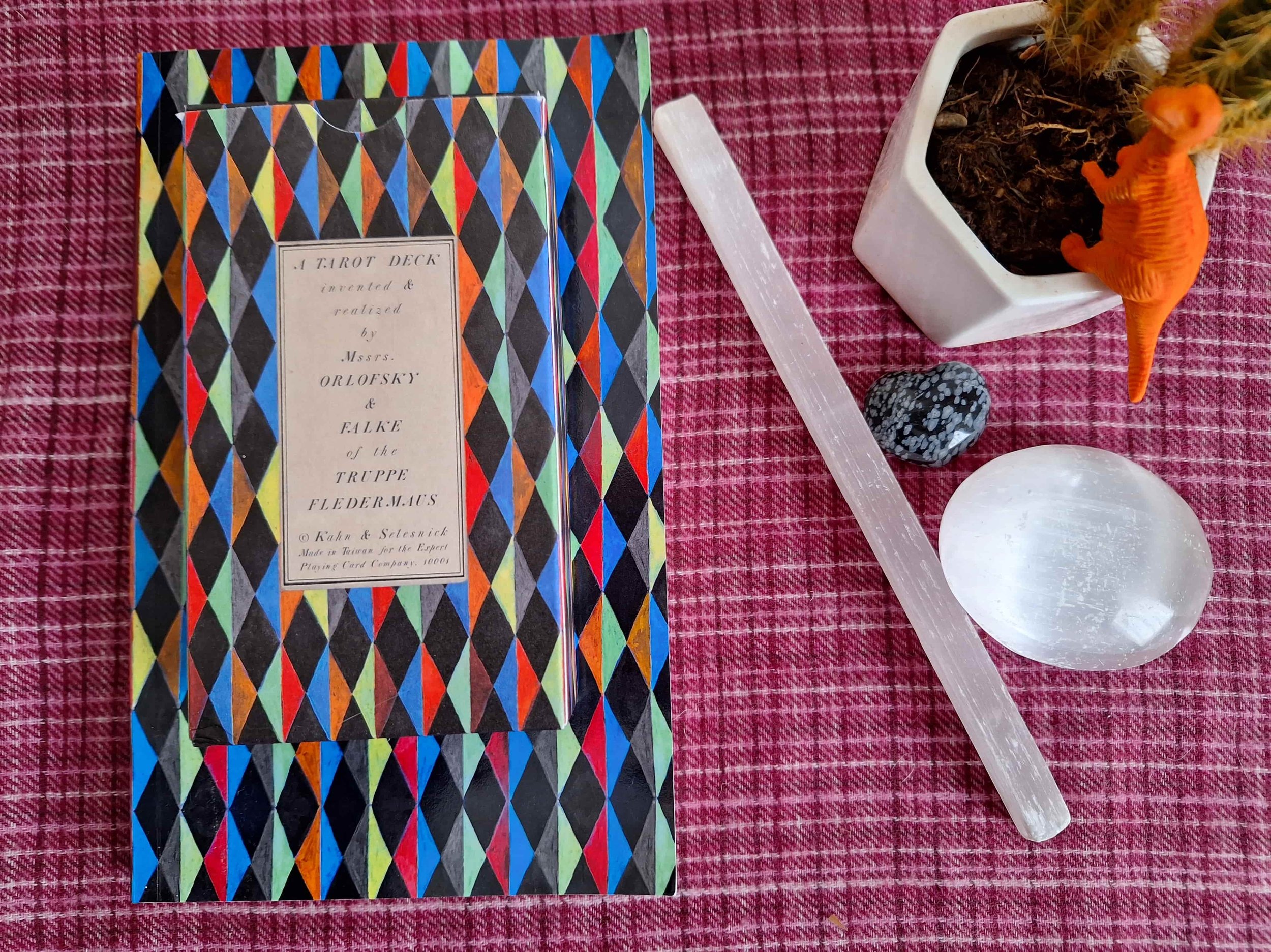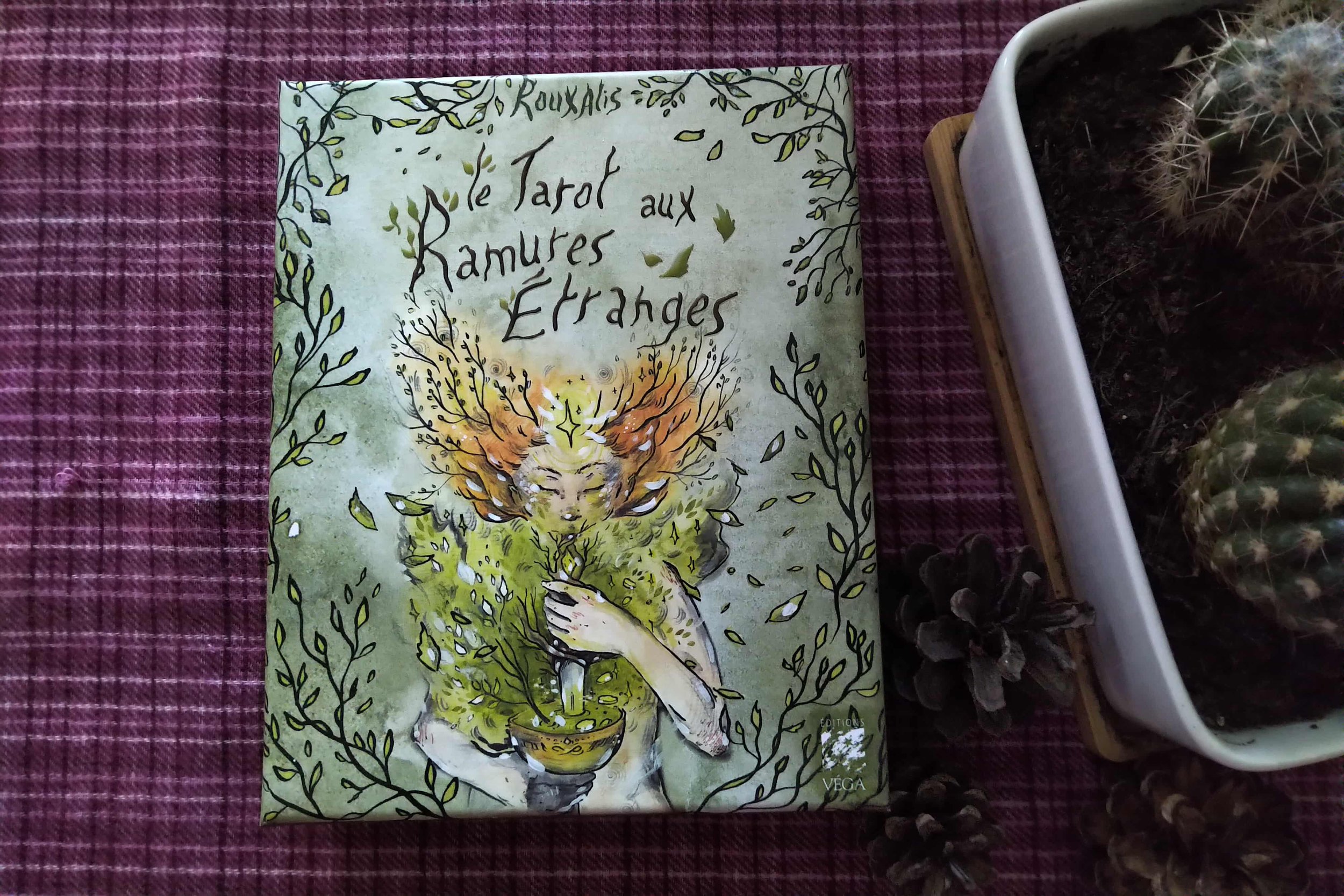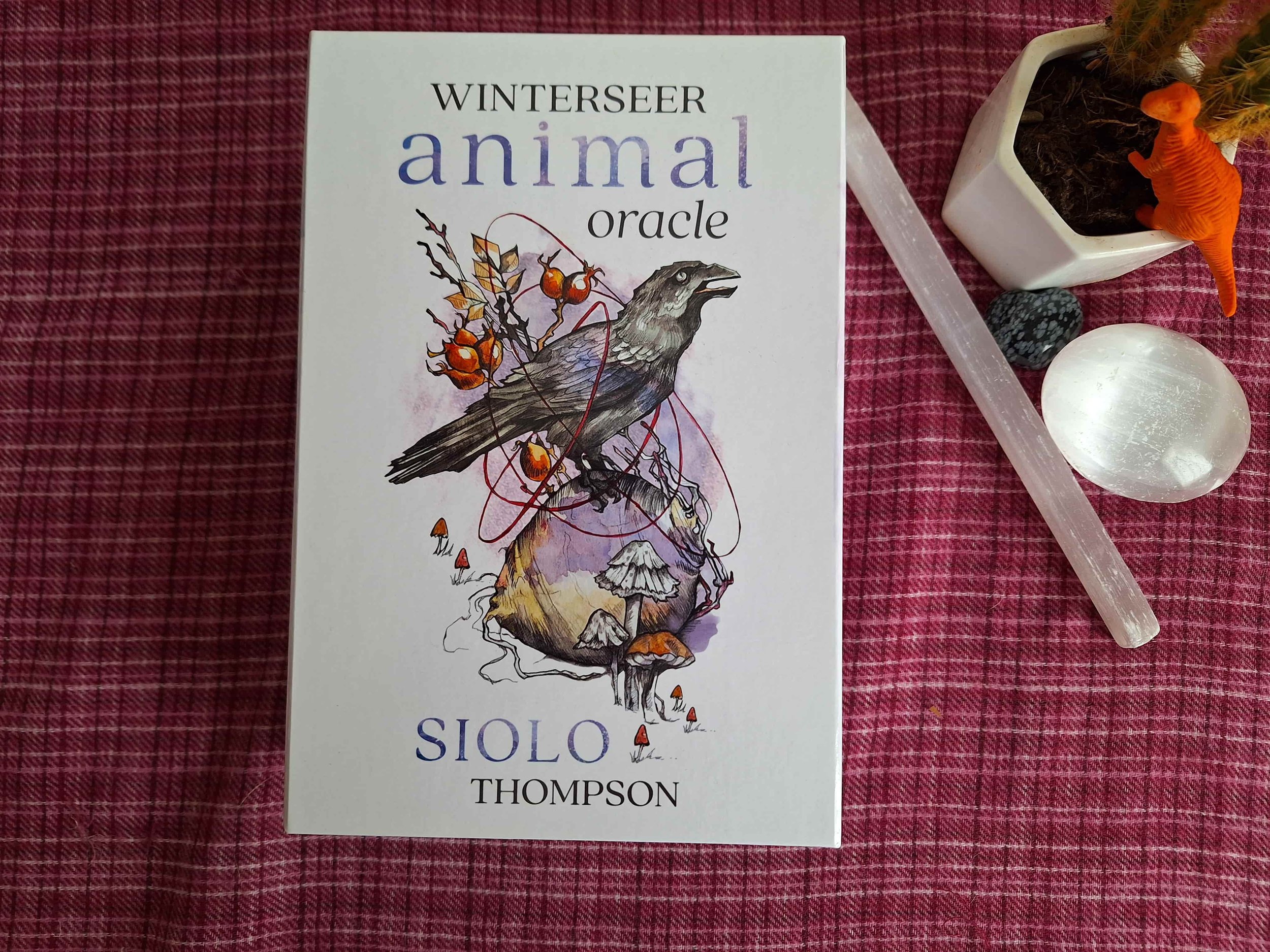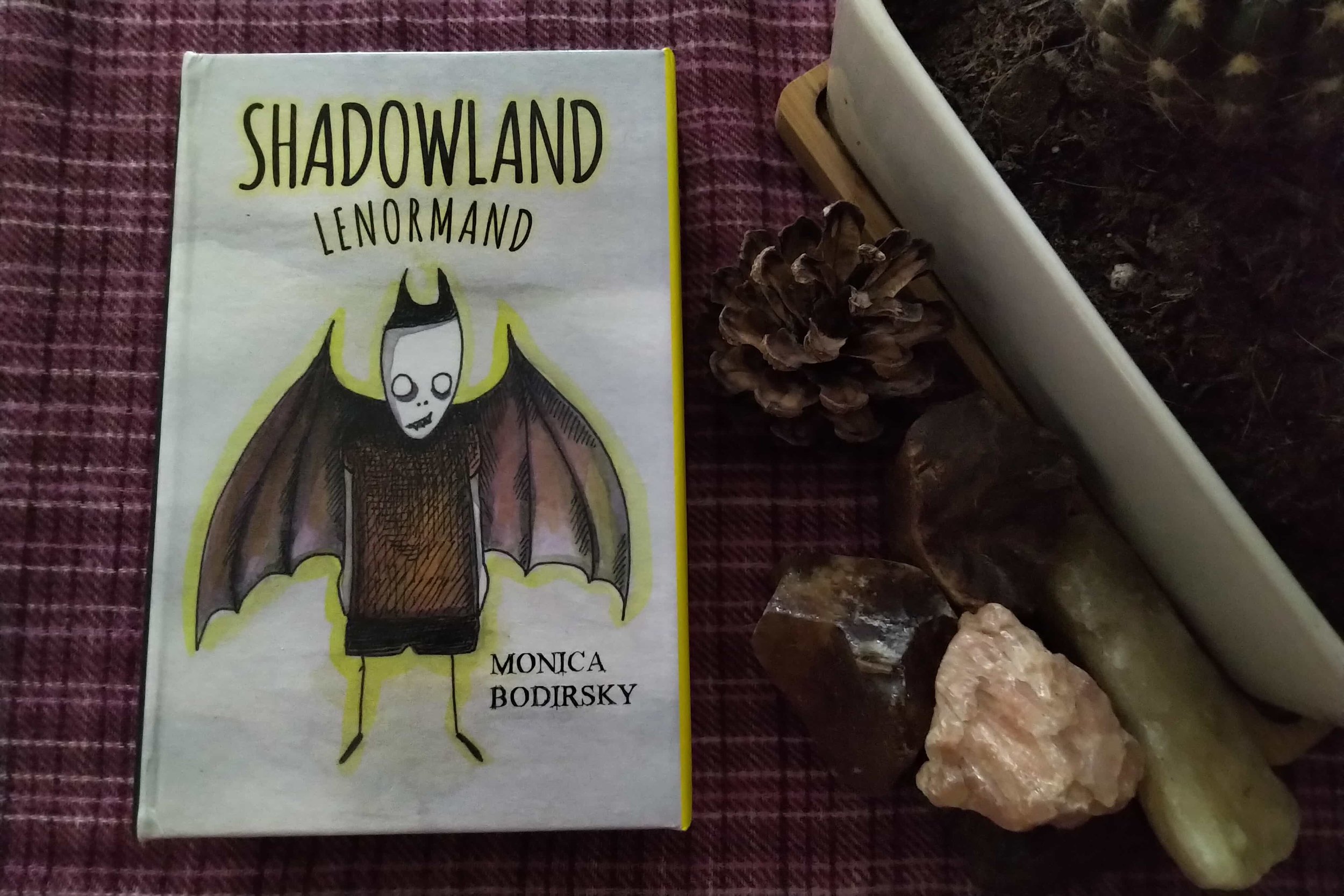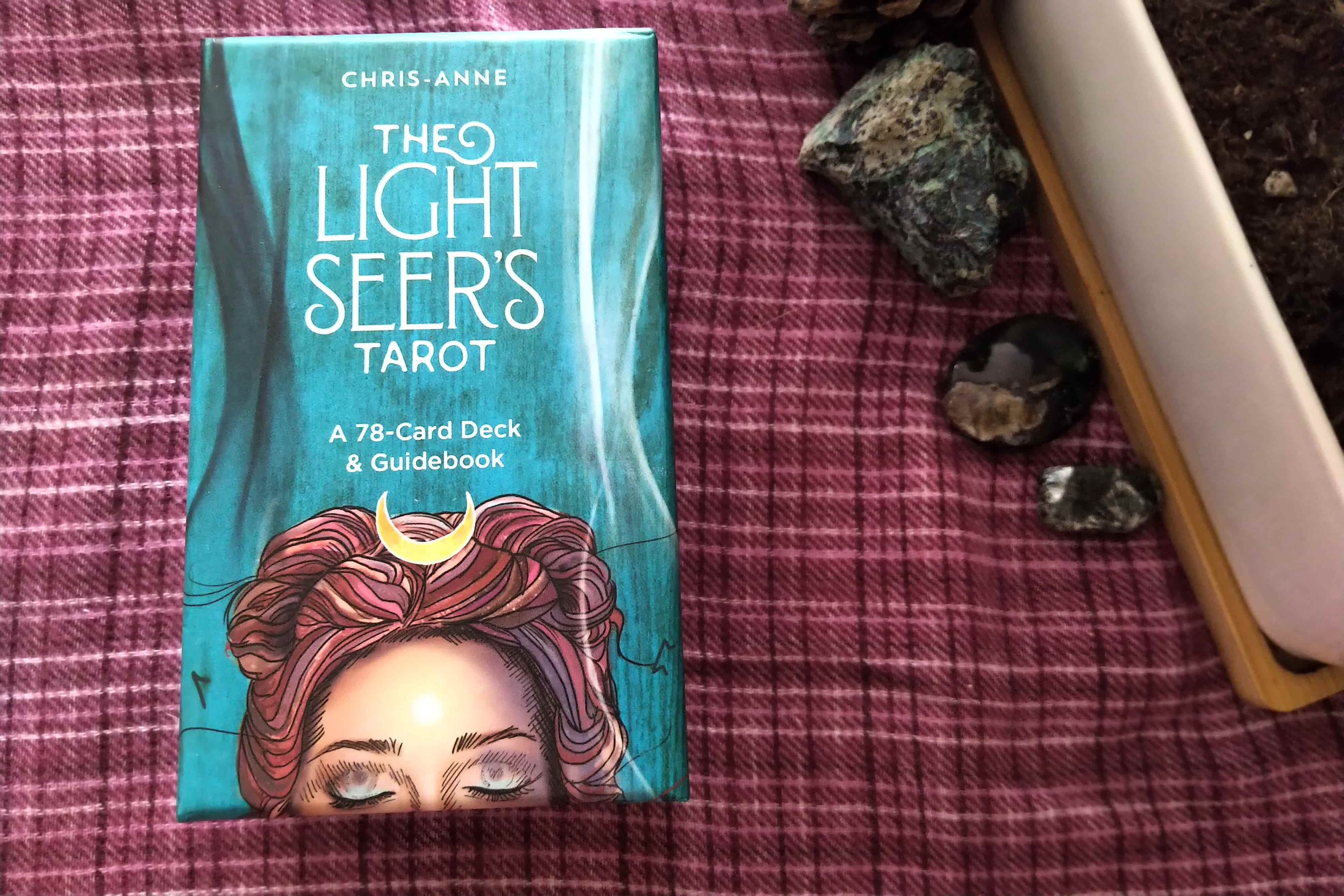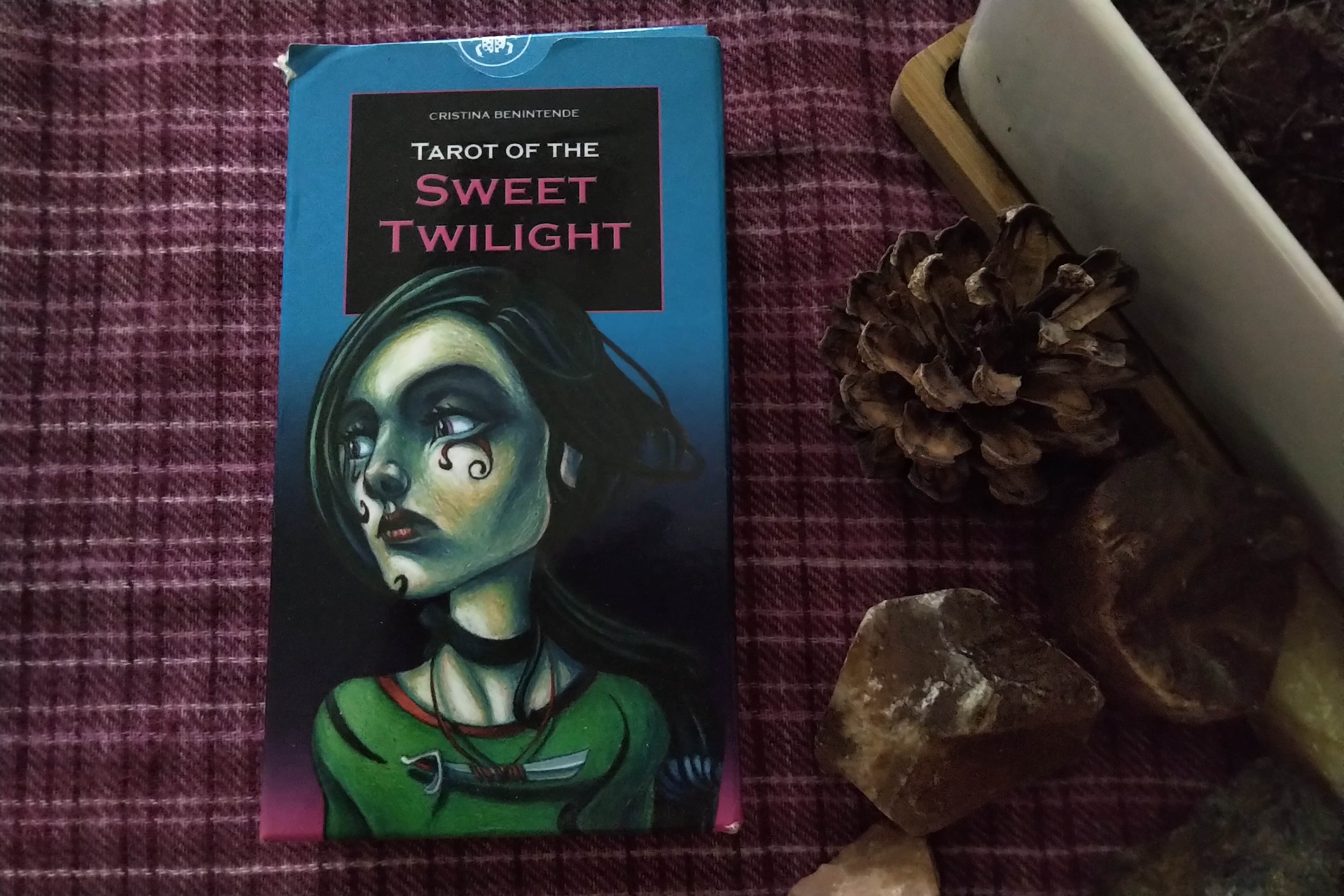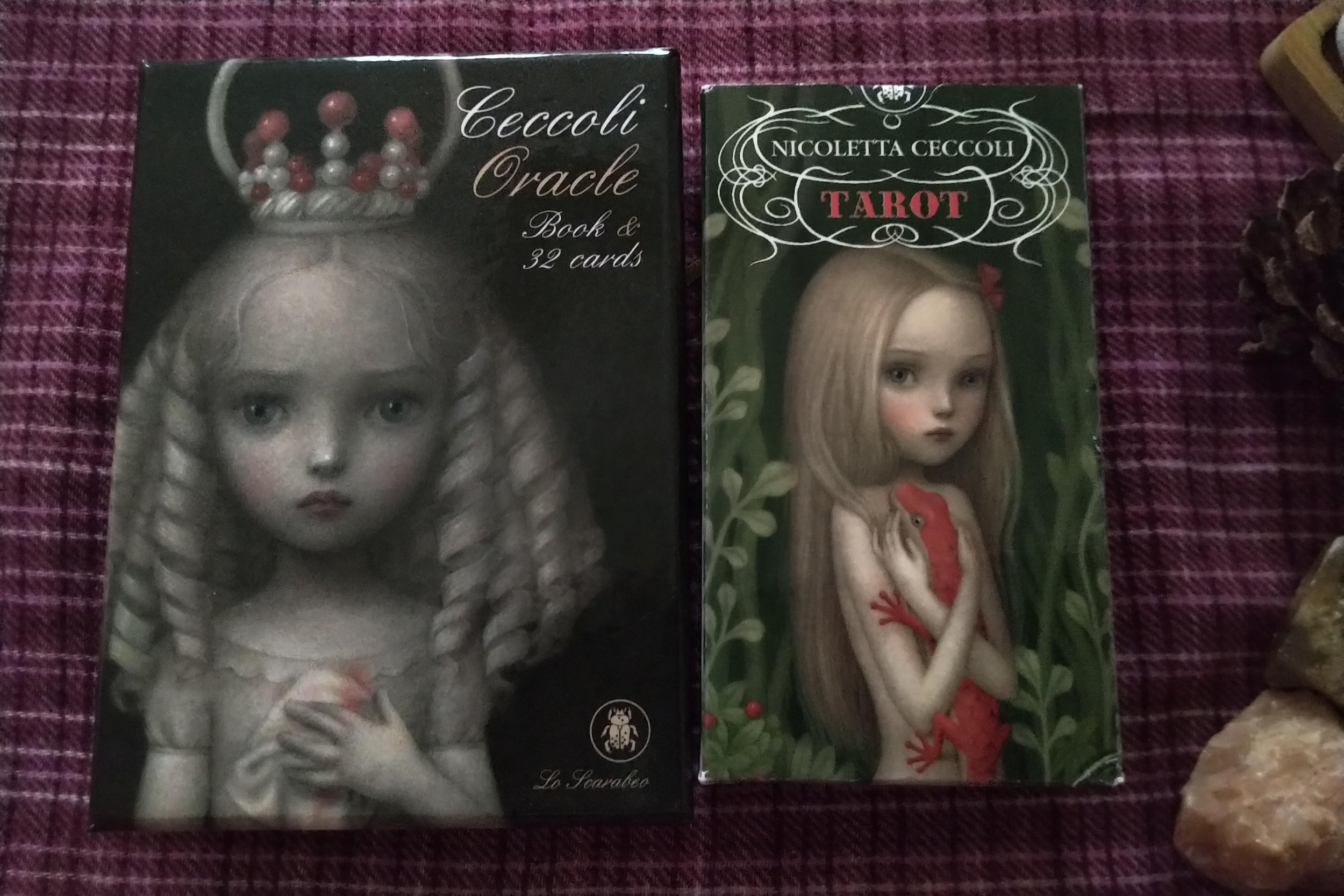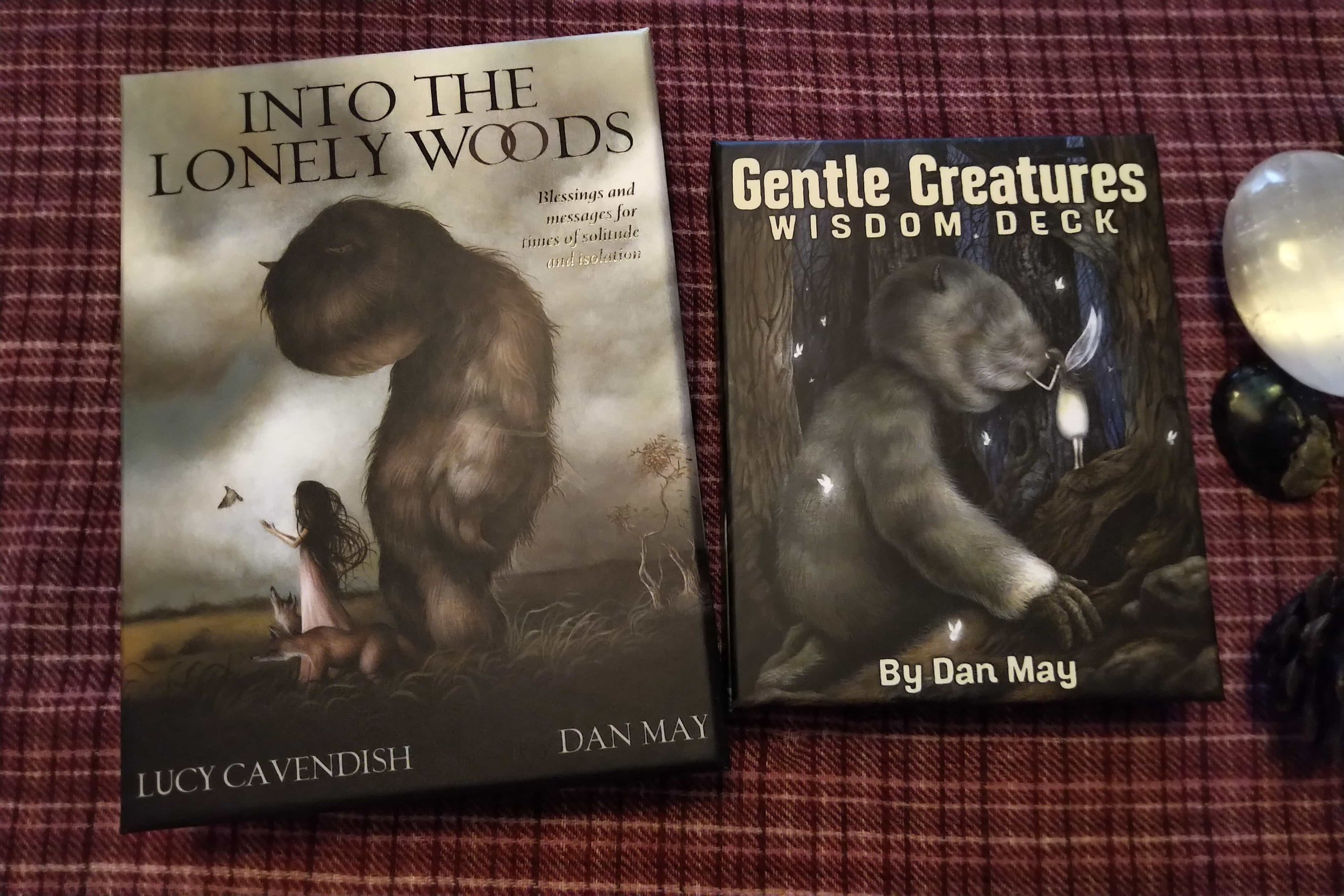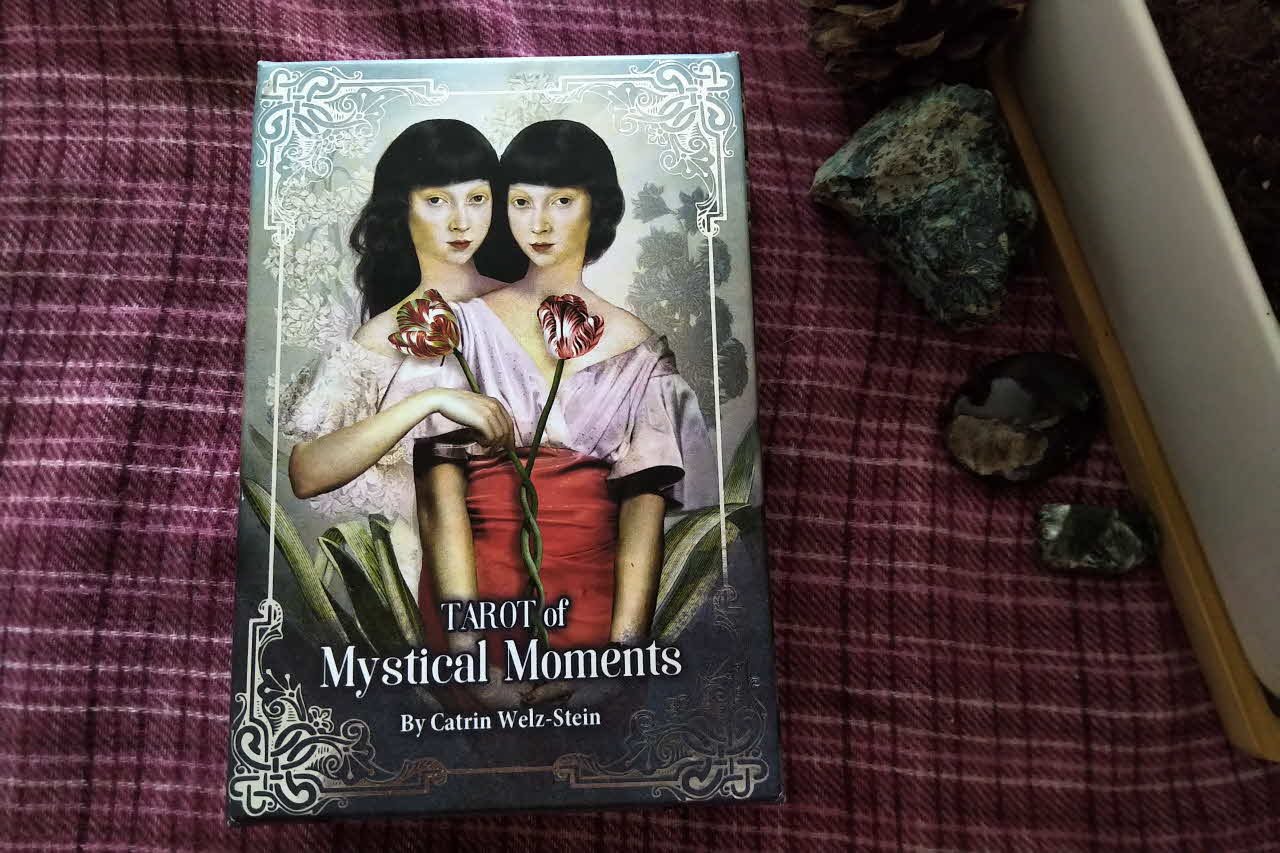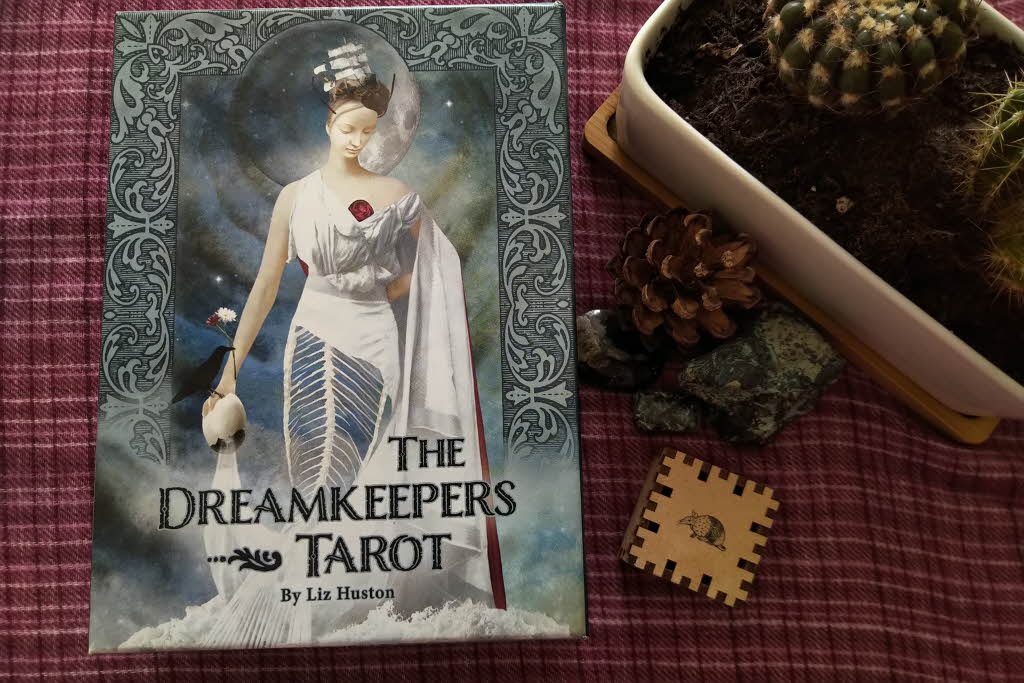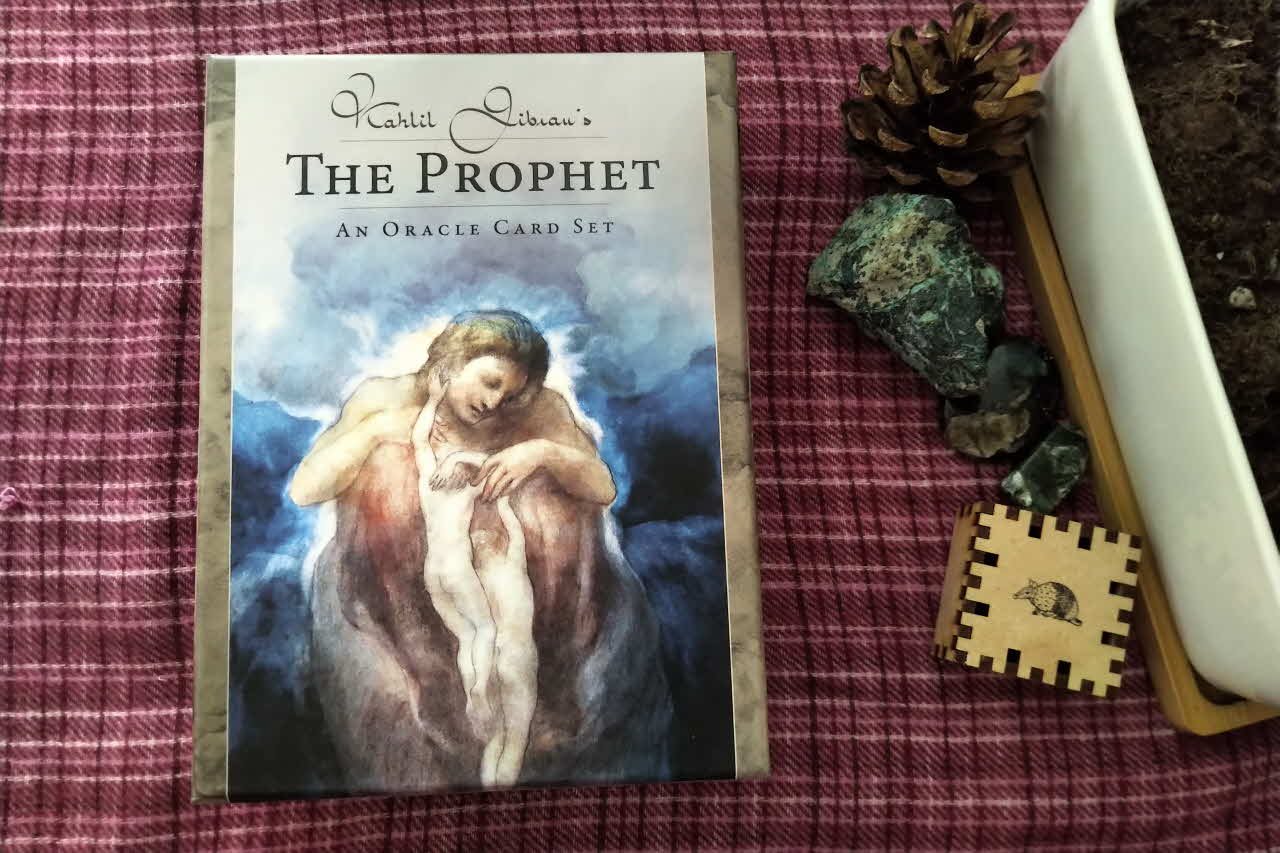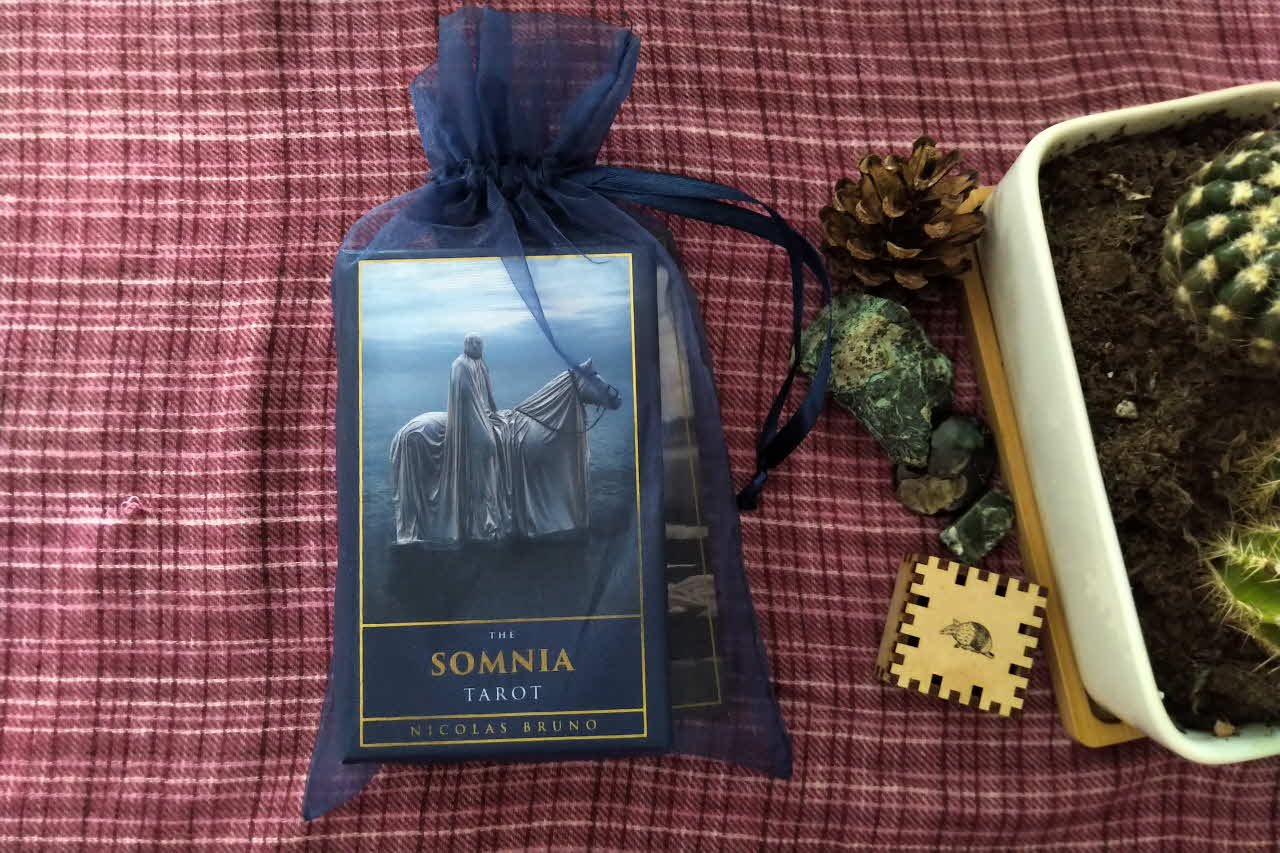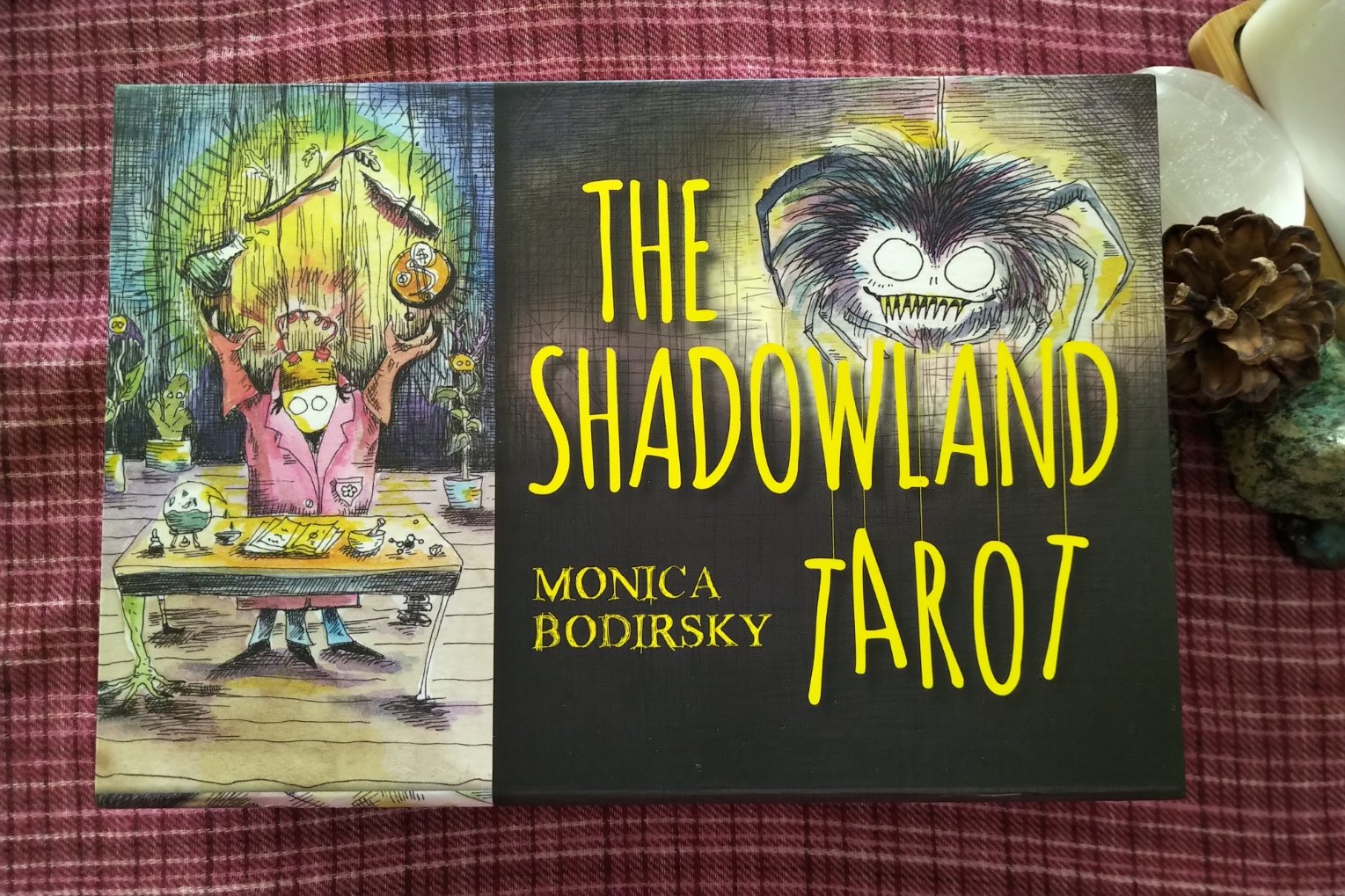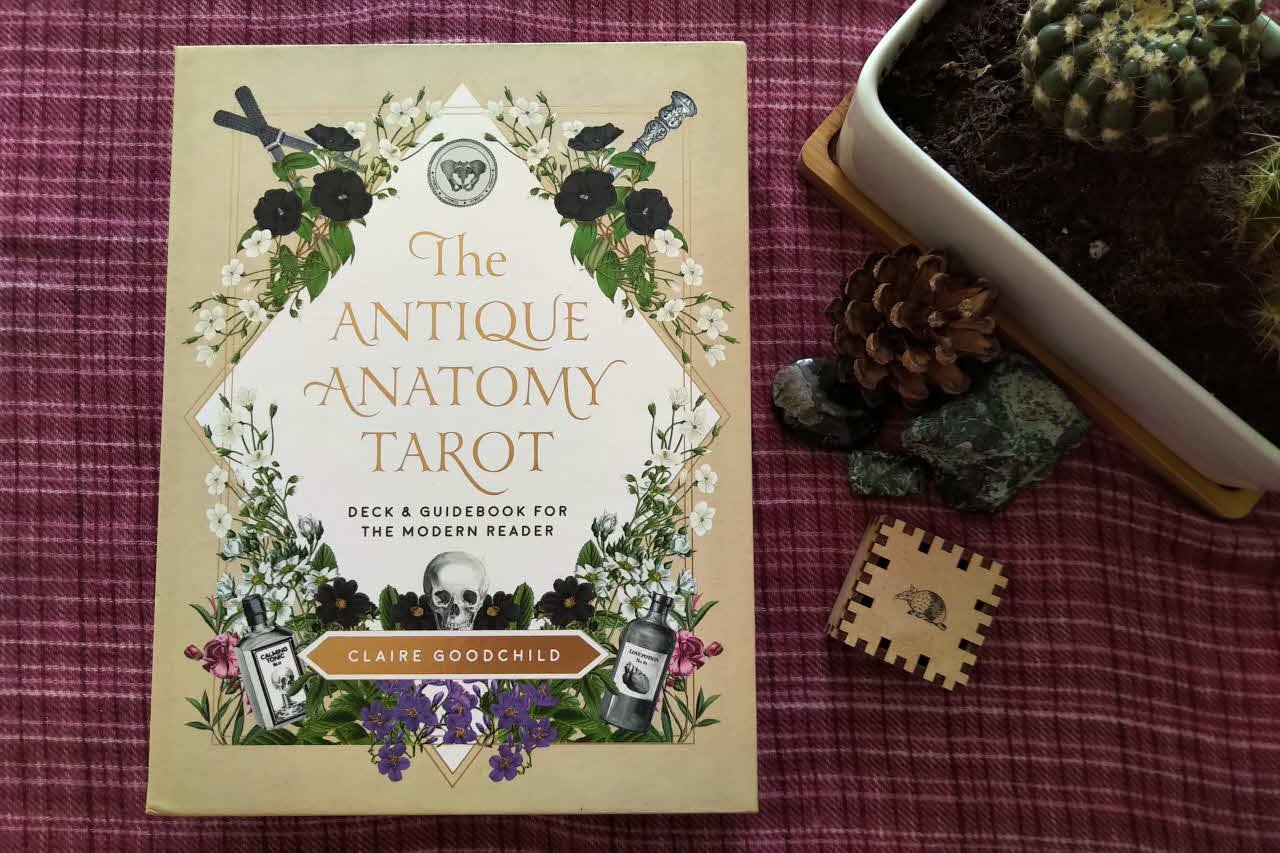The Awakening Tarot: An Elemental Approach

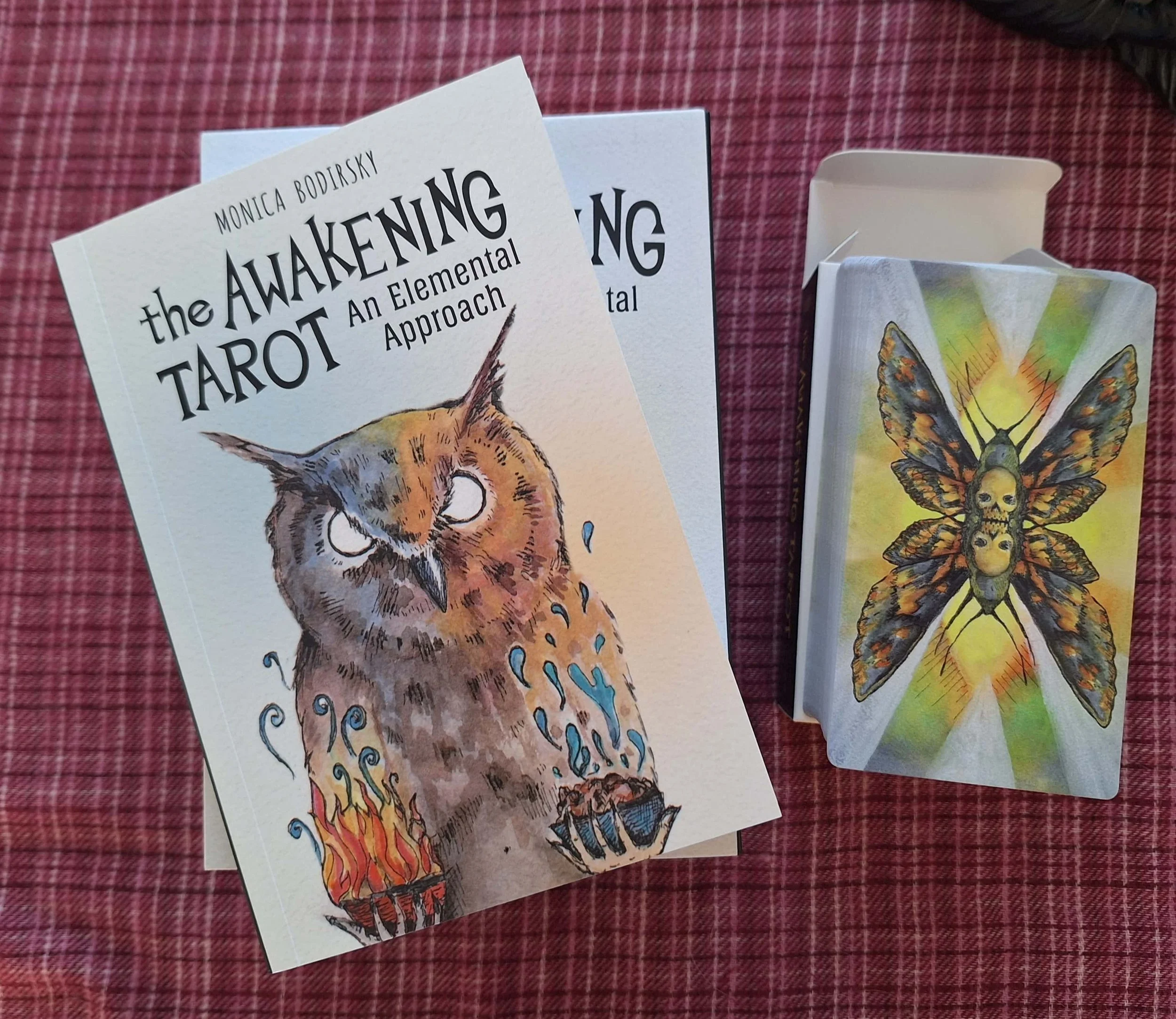
I’ve had my eye on this deck since before its official release and was so excited to look through the cards. I am embarrassed to admit it’s been sitting in the cupboard for about six months now. Published back in May 2024, The Awakening Tarot is another creation of Monica Bodirsky. Monica has previously created: The Shadowland Tarot, Shadowland Lenormand, the House of Shadows Lenormand deck, Between The Worlds Oracle, and Bats Blood Ink Oracle.
The deck comes in a sturdy box with a magnetic clasp and a substantial guidebook. It follows the traditional tarot format of majors and minors, but Monica has renamed all of the major arcana, the court cards, and the suits. It’s certainly suitable for a beginner, thanks to the guidebook, although I have yet to dig into the artwork to see how that helps or hinders the interpretations.
I appreciate the structure of the book. I love that Monica includes an image description at the beginning. Then we have Keywords followed by a brief message, advice/upright, reversed, shadow, and finally reflection questions. So, there’s plenty of help in the book to enhance interpretation.
I want to run through the renaming of the cards quickly. Starting with 0. The Seeker, I can see the person has a bag of maps, but I’m a little confused by the use of a camera for the head. Birds usually symbolise ideas and thoughts, so they fit okay. A problem I have is using the word seeker for The Fool. I wonder if it’s too narrow to show what this card is actually about. I’m not surprised to see Monica has ditched The Magician in favour of 1. Manifestation. It’s pretty clear to see the emphasis on each of the elements, and this is good. I don’t like she’s renamed The High Priestess The Sage. I also don’t like the rainbows. It’s one of those cards that emphasises unconscious feminine energy, and while I see the triple moon and the third eye, I don’t think it conveys the dark and mysterious aspect of this card. The figure looks more male than female. Sage is also generally used for a wise man — if she’s removed the wise woman, I want to see a replacement when we get to the hierophant. 3. Abundance is apt enough for The Empress. I like that the figure is feminine and has a horn of plenty for a head. The earthiness of the legs morphing into tree roots works well. The Emperor has become 4. The Green Being. Again, I’m struggling with this. The Emperor carries the fire element and Green Being screams earth to me. I like the tree design, but I'm simply not sure how it represents the card. The book gives leadership as a keyword, but I don’t think I’ve ever related trees to leadership. 5. The Seer seems out of place as The Hierophant. The figure looks more feminine than the traditionally male Hierophant. I like the candles burning from the antlers — I can see how that relates to the divine guidance aspect of this card. 6. Intimacy is a pleasant card with a couple sitting on the branch of a tree. Because they’re staring at a big fat moon, it could be a good indicator for facing fears, but also that the relationship is compelling and driven by unconscious needs and desires. I’m straight back to the struggle with 7. Balance. Beehive mind? A snake around the neck. There’s nothing in the image to suggest being pulled in different directions. Although, I love the artwork, and may do a social media post on this one. 8. Fortitude is an effortless substitution for a Strength card. I'm glad to see Monica kept the lion here. The artwork for 9. Contemplation is clear; a lone traveller has a candlelit lamp in place of a head. The emphasis is clearly on the inner journey, but I feel it may reduce the scope of The Hermit.
10. Destiny as a replacement for the Wheel of Fortune makes sense and I like the concept of a spider knitting a web. Using an owl for the Justice card is a good call, but I think naming it 11. Integrity limits the original meaning of the card. 12. Perspective shows an upright figure with birds on the arm branches. It certainly describes an aspect of the card very well, but I think it falls short of conveying the card’s meaning. The death’s head hawk moth is a nice choice of imagery for the Death card. Renamed 13. Release, we can see pieces coming away from the lower human legs. Then comes 14. Transformation. I’m struggling to think of anything other than no, just no.
15. Servitude in place of The Devil shows a computer on wheels with two factory chimneys rising from the top of its head. I like this artwork, and it's another card I’d like to spend some time digging into. I find The Tower as 16. Epiphany falls short of the traditional meaning. The image of a head split in two certainly conveys a message, but I‘ve always seen this as one of the possible results of The Tower. With 17. Aspiration in place of The Star, I am again struck by how Monica has picked a small aspect of the card’s original meaning to use as the main focus. The Star comes up most often during periods of difficulty: aspiration can sometimes be a part of the interpretation, but for regular clients, it’s generally a message to keep their hopes alive. The book gives desires, visions, goals, destiny, faith, confidence, and aspirations as keywords.
18. Cycles, yes, of course, The Moon represents cycles, but as another card that can point us inwards to our unconscious, I think renaming it this way kind of limits the reader’s immediate understanding of the weight this card can carry. I can see that Monica has retained the wolf and crayfish in the legs of the being on the card, and this is helpful. The book offers keywords of time, seasons, sequences, recurrent, growth, and illusions. I’d say no to half of those. She mentions
I don’t think 19. Well-being is a strong enough word to express the energy of The Sun card. The artwork is beautiful and better shows the solar energy through the use of the rays emanating from the face of the being on the card. I can appreciate why Judgement has been named 20. Awakening and I like that some of the focus is clearly on the inner spiritual process. The hands held up to the mystical symbol whether in prayer or surrender are a nice touch.
21. The Cosmos shows a cosmic egg with a coiled serpent. It’s easy enough to relate the imagery to endings with new beginnings, and a sense of completion. However, there is a strong earth theme throughout the deck, and yet there is nothing grounded about this card’s imagery. The cosmic egg stuff is very spiritual, which is fine, but The World is a card that relates to real-world stuff. It’s not an inner process — I mean when we go through external changes something also happens within, but the artwork seems to bypass all the human elements inherent in life experience and transition.
Moving onto the minor arcana, we have the Earth element replacing Pentacles. The Four of Earth is a curious card — “A humanlike tree being grips rabbits tightly while smiling.” It’s the bunnies that threw me off. I know this card is about holding onto resources, often too tightly, but I’m not sure he should be holding them like that at all. But anyway, it’s the Five of Earth that I want to look at closely. It reminds me a little of the eight of swords from the Dark Grimoire Tarot. The card shows a humanoid-type creature looking at a natural landscape within a bell jar. The keywords given in the book are solitude, separation, absence, containment, objectivity, isolation, and lack. The book places a lot of emphasis on inclusion/exclusion and community. This deviates somewhat from the traditional meaning which emphasises material concerns, poverty, charity from institutions, and worrying about security. I have noticed the shift to focus on being left out in the cold, and have mentioned it in other reviews. I don’t think it’s helpful and it shoves too much attention onto other people and not being included. The card imagery is saying a lot, and it’s another one I’ll look at properly another day.
A card I like is the Eight of Earth and how it shows craftsmanship and skill with the potter sitting at the wheel. I love the bowls coming out of the head because it suggests his mind is on the job. Or maybe all he thinks about is work. . .
I am always interested in the Nine of Earth because it’s usually a card I strongly relate to. I find the artwork a bit plain and uninspiring but the crystals growing out of her head do suggest worthwhile ideas or thoughts. The book suggests a time of kicking back and enjoying the rewards of effort, but I find with the nine of earth, the person is usually pretty busy and very much enjoying work. I’ve noticed there is often an element of perfectionism through work when this card turns up in a reading — so, I’m not sure how this would fit when using the cards for others. Would I rely on what I know about the original card's meaning, or do I stay faithful to the author’s intention?
I want to mention the Voyager of Earth because he has the same antlers that we saw in 5. The Seer. There is nothing in the book that mentions the similarity, instead, it talks excessively about ancestry. The keywords are emissary, research, comprehension, lineage, legacy, context, and connections. The message given for this card is “Our overall security is affected by how much we acknowledge our ancestors.” Seriously? This is not the time nor the place for me to go there, so. . .
Moving swiftly to the suit of Air (swords), I head straight to the three, as is tradition. The Three of Air shows a torso with a gaping hole with one arm reaching for a disembodied heart. I like the message that the heart needs to be pulled back to oneself, but it displays nothing of the heartache or pain a person can be in when this card appears in a reading. The Four of Air beautifully depicts rest and respite with a person sitting high up in a bird’s nest. Next, we come to the Five of Air, and we see a figure with a nest on top of his head and a bird shrieking loudly. The figure holds a bunch of eggs in his hands, and the look on his face shows strain. The book says, “I win and you lose." — MESSAGE: Thinking in terms of black and white is limiting your worldview. I struggle with the interpretation of this card because I usually see it turn up in a reading when a complex situation is in play. While it often boils down to either/or, the suggestion it’s because of competition or binary thinking is a little bit shallow, to say the least. If anything, it’s more of a no-win situation with an added dose of hopelessness. The Six of Air shows a man being carried by the feet of a bird and this fits really well with an aspect of the traditional meaning which is all about being carried away from difficulties, usually with the help of higher forces. The imagery on the Seven of Air is interesting and it suggests that strategy, complex thoughts, and leaning into one’s rational mind. Monica leans heavily into the less common but positive aspects of this card with her interpretation in the book.
The Eight of Air reminds me of an image by the illustrator Denis Dubois. Igor Morski has also done very similar work but with photography. IMAGE DESCRIPTION: A small, humanlike being with wings is trapped in the skirt-like cage of a blindfolded, limbless being. The message says, “You are the story you tell yourself.” I like the artwork, and I certainly agree there’s usually a strong element of being trapped mentally when this card appears. The book interpretation (advice/upright) is a little wide of the mark for me, but Monica does mention communication, and I think this is often the key to breaking free of the energy of the eight of swords. The Nine of Air is a fantastic depiction of the mental angst and attack that is generally associated with this card. I love the hornets flying out of the man’s head.
The suit of water corresponds to the traditional cups. Two of water is a gentle image, but it doesn’t give much of a hint of the reciprocity this card is known for. The book’s description talks about relationships and collaboration, and I think it would’ve been nice to see this aspect in the artwork. That being said, other than 6. Intimacy, I can’t think of any cards that show more than one person. Three of Water shows a baby having fun in a big bowl of water that is held up by three disembodied hands. It’s a cute depiction of joy, celebration, and support. Boredom and apathy are often at the heart of the Four of Water and what perfectly apt artwork we have here. A figure yawns widely whilst balancing shells on its head. I love it. The Seven of Water is a striking-looking image, and I love the sea creatures erupting from the mind. I think it’s a perfect representation of the daydreams, fantasy, and imaginings this card signifies. The book’s quote, “I have so many choices, it’s easier to leave them in my imagination.” is very much on point. In the Eight of Water, the artwork shows the back of a figure walking off in the direction of a new horizon that looks full of vegetation. I suppose the question here is whether the person represents the self, or could it refer to watching somebody leave? I do want to mention that the images for the water suit court cards are my favourites — especially the deep sea diver mermaid of the Voyager of Water (the knight).
The suit of fire corresponds to the traditional suit of wands. Artwork in any deck for the Three of Wands often confuses me, but looking at the Three of Fire and the searchlight head of the being makes sense for this card if the focus is on future planning. However, the Four of Fire is a bizarre image — a fox-headed figure holds sparklers and looks up to watch fireworks overhead. In the book, we are given keywords of: Joy, surprises, contentment, parties, celebrations, receptions, reunions, and events. The only word I relate to here is contentment, so it departs a little from my understanding of the card. I generally see it as a sense of completion, sometimes a renewal of passion for the life lived. The fire coming out of the top of a serious-looking figure’s head in the Five of Fire is a nice take on the heated thoughts that can be present when this card is pulled in a reading. I quite like the Ten of Fire. The image shows a tree-like being with the upper half of the body as a mass of flames. Even though the card typically represents burnout and being overburdened, the picture gives signs of life through a small branch and leaves growing out of the tree leg. It’s a small but sure symbol of hope and renewal. In the Voyager of Fire, I am perplexed by the sight of a person holding a fire extinguisher — mainly because the card usually represents someone more likely to start fires than put them out. But, I love the artwork for the Artist of Fire. The torso of the being as a kiln with newly made pots stacked above inside the head is a lovely image.
I think The Awakening Tarot is a wonderfully creative deck with great artwork, although I am not convinced the renaming of the majors is helpful. If anything, I find it quite reductive and mostly it just doesn’t work for me. It’s a good deck if you prefer to keep your self-development relatively superficial or if you’re consciously avoiding depth work because you’re not ready. It’s simply not dark enough or gritty enough to bring up the demons from the depths. Another issue I have is with the claim it’s ‘An Elemental Approach’. Other than renaming the minor arcana as their corresponding element and the liberal use of each in a visual sense, it’s not a deck that inspires that in me.
Honestly, I do love The Awakening Tarot despite finding certain aspects problematic. My favourite suits are most definitely water and air, and there is no way I could narrow down to a handful of cards that I love the most — there are too many. It's a great deck to use when reading for others because it’s not dark or deep — most people want information to be kept relatively light. Some of the cards are seriously intriguing, and I'd be interested to analyse them closely when I have the time.
Recent Posts
Archives
Categories
- Animal-centred
- Books
- Decks For Self-development
- Difficult Decks
- Expensive Decks
- Lenormand Decks
- Oracle Cards
- Oracle Cards For Beginners
- Out-of-print
- Personal Favourites
- Published 2000s
- Published 2010s
- Published 2020s
- Tarot
- Tarot & Oracle Sets
- Tarot Cards For Beginners
- Under £15
- Under £20
- Under £30
- Under £40
- Witchy Decks
- Woman-centred
